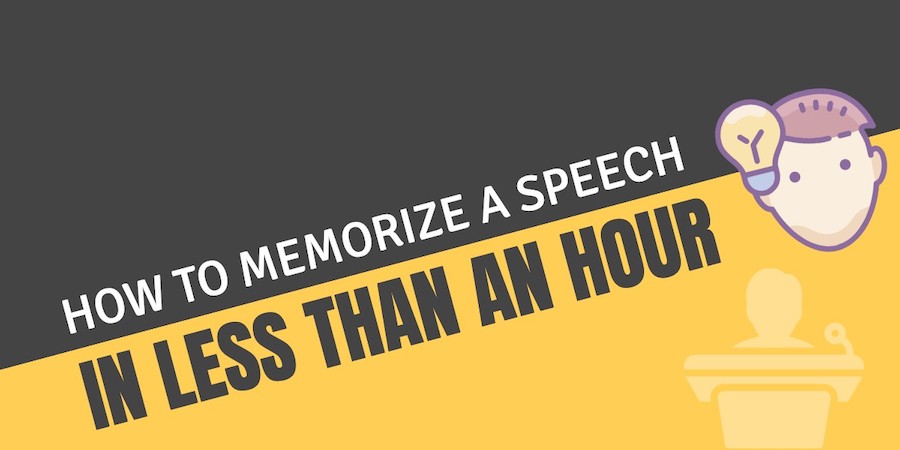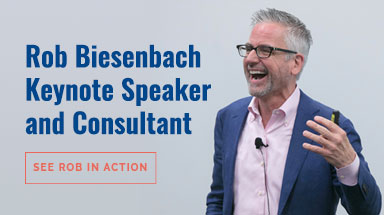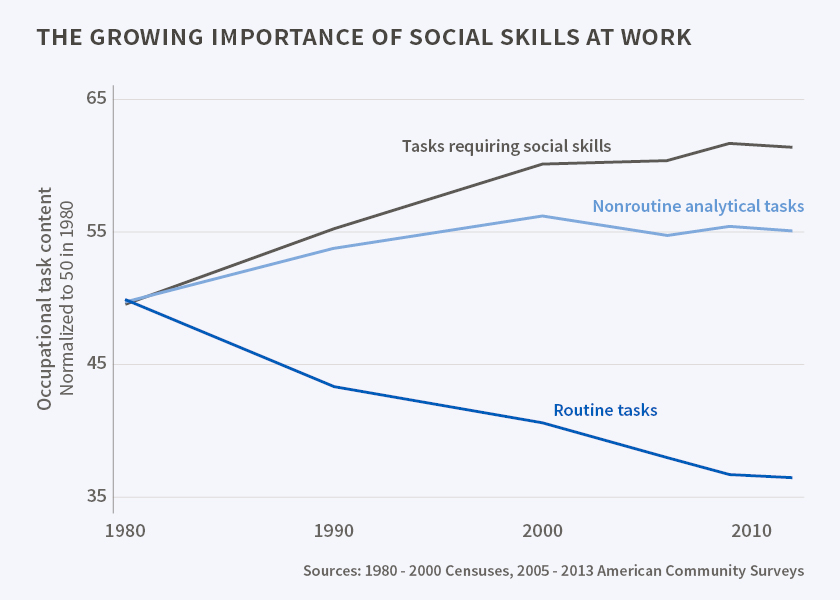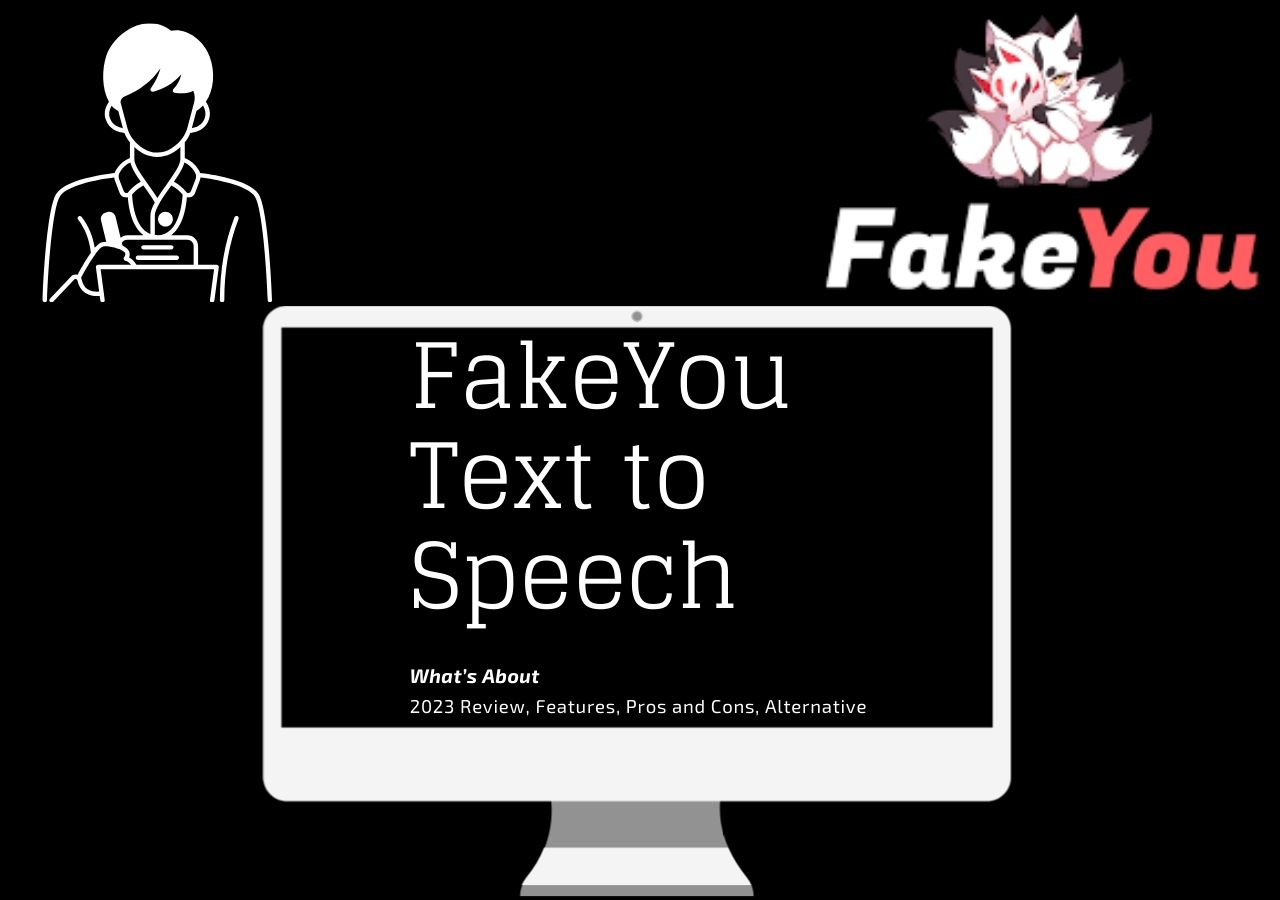

How to Give a Speech Without Crying? 10 great tips
- Filed under: Presentation anxiety , Public speaking articles , Speech delivery , Speech preparation , Stage fear
I am often asked for tips on how to give a speech without crying. At first, I assumed these people were just nervous or perhaps suffering from stage fright. However, I soon learned that it’s sometimes simply an overwhelming emotional experience to give a speech. This may be at a wedding, a funeral, or during a graduation party for example. No matter the reason—professional or personal—I have many tips for teary-eyed speech givers.
So, how to give a speech without crying? Take deep, calming breaths. Add some humor, if appropriate. Take a moment to acknowledge the emotions involved. Don’t forget to pause for reflection and composure. Focus on the mundane.
I’ll get into the details a little bit later, but these were some quick tips for you to use. All of that is helpful advice, but if you know anything about me at all you know I’m thorough. Of course, I have so much more to tell you. Keep reading to find my best-detailed tips on how to give a speech without crying.
Also, I think you should check out these books about public speaking, which will give you even more information and prepare you for the speech even more.
Table of Contents
How to Give a Speech Without Crying
Giving a speech isn’t always about sharing new ideas, selling your products and services, or getting ahead in business. Sometimes, we are called on to give speeches of an emotional nature. Even the toughest of us have suddenly been gripped by the lump in the throat and that urge to burst into tears.
And that’s totally okay. Sometimes, being overrun with emotions can work in your favor. Depending on the situation, you may be able to use the tears to your advantage. Other times, it’s best to keep your cheeks dry.
In either case, there are many things you can do to get through your speech without crying.
#1 Breathe Deep
When we are overcome with emotion or fear, your body will register stress. One of the first ways it does this is by restricting breathing and tightening your throat. You may even completely hold your breath.
Since you need oxygen in order to give your speech, any kind of restriction in breathing will really mess you up. That’s not even talking about the increased stress you’ll feel when you realize you’re about to pass out from lack of oxygen!
The easiest remedy for this problem is to simply take a long, slow, deep breath. It sounds so simple, doesn’t it? Unfortunately, taking slow and steady breaths when your emotions are taking over can seem like an impossible task.
This is where a little preparation can come in handy. If you know that you’ll be giving a potentially emotional speech, or that a speech you must give in a business setting may cause you to cry, it’s worth the effort to learn some simple breathing techniques beforehand.
Did you know that taking even one deep, calming breath may be enough to counteract your adrenaline and your emotions? If you don’t have time for a full set of breathing exercises while your audience stares at you, just take one breath. It may be all you need.
#2 How to Give a Speech Without Crying Using Humor
“Funny people aren’t funny because funny things happen to us. We’re funny because we take the tragedy that happens to us, and turn it into comedy.” – Judy Carter
Unless your speech is happening at a solemn event, you may try adding a little humor to ease your nerves and calm your emotions. You might be surprised to learn that some somber events, such as funerals, are actually appropriate for gentle humor, too.
The key to making humor work to calm you during your speech is understanding your audience . If these are friends and family and other loved ones, humor is almost always acceptable. In fact, your audience may welcome the release that laughter brings.
#3 Acknowledge Your Emotions
It may seem counterproductive, but acknowledging your emotions may prevent you from crying during your speech . The more you fight strong emotions, the harder it is to ignore them. So stop ignoring them.
Recommended books
How to Deliver a TED Talk: Secrets of the World's Most Inspiring Presentations
Jeremy Donovan
Resonate: Present Visual Stories that Transform Audiences
Nancy Duarte
Confessions of a Public Speaker
Scott Berkun
Talk Like TED: The 9 Public-Speaking Secrets of the World's Top Minds
Carmine Gallo
The Checklist Manifesto: How to Get Things Right
Atul Gawande
The First 20 Hours: How to Learn Anything... Fast!
Josh Kaufman
But how do you acknowledge your emotions during a speech without breaking down into rivers of tears?
Encouraging self-talk is the best way to accomplish this. Mentally acknowledge that you are emotional. Tell yourself that it’s okay to feel whatever it is that you’re feeling. It might be fear, it might be sadness, it might be absolute excitement that is manifesting as tears. Whatever the feeling, tell yourself it’s okay to feel that.
After you’ve acknowledged your feelings, take that deep breath we mentioned in the first tip. It’s incredibly cathartic to mentally acknowledge emotional energy, then release it physically through a deep, controlled breath.
Definitely, check this guide here on how to overcome stage fright.
#4 Pause for Reflection and Composure
Some of the best speakers use natural pauses in their speeches to emphasize parts of what they’re saying . But they may also be using those pauses to compose themselves. This is especially common during emotional speeches such as during a wedding or while accepting an award.
You can find good places to pause your speech ahead of time . For example, while you’re writing your speech, you’ll probably feel some of those emotions creeping in. They’re giving you a preview of what your actual speech may be like.
Don’t force those feelings away. Use them to identify places where you should create a natural pause in your speech . Those pauses are where you should take your deep breath and acknowledge how you’re feeling.
#5 Focus on Your Notes
One of the best ways to avoid crying during your speech is to focus on your notes. A well-written speech with useful notes gives you a low-key item to concentrate on. When your emotions start to overwhelm you, simply glance down at your notes and pretend to read them for a second or two.
It may not be the most graceful method to calm your emotions, and it certainly isn’t surreptitious, but it’s also not unusual to have a speaker look at their notes. As long as you don’t stare at your notes the entire time, it’ll look perfectly natural to glance down and regain your composure once or twice.
As a side note, I wrote an article about how to use notes in your speech which you can find here.

#6 Focus on the Mundane
Maybe you don’t have notes, or maybe you’ve already looked at your notes too many times and your audience is getting suspicious. Whatever your reasons, you may need another option to stop your tears during your speech.
So, how to give a speech without crying if you can’t look at your notes? Change your focus.
Look out across the audience, avoiding any eye contact for now. Too much eye contact when your emotions are flaring may cause the dam to break and get the tears flowing. Instead, look out past the people. Find something in the back of the room that has no meaning to you.
Maybe it’s a poster on the wall or a stack of chairs. Maybe it’s the door out or a window overlooking the parking lot. Find anything in the back of the room that can help distract you from the overwhelming emotions tugging at your tear ducts.
#7 Take a Drink of Water
Have you ever seen those pitchers of water sitting next to a speech-giver? They’re not there for decoration. Professional speakers aren’t just really thirsty people either.
Water is usually provided for speakers for two reasons. The first is that speakers’ mouths often get dry. It’s simple biology.
The second is that taking a sip of water is a well-known way to relax your throat , give you a moment to compose yourself, and helps you focus on something other than your speech for a moment.
If you notice, taking a drink gives you the opportunity to use several of the tips already listed here. It’s an unobtrusive way to get through a speech without crying.
#8 Practice, Practice, Practice!
If you’re really panicking about becoming emotional and bursting into tears during your speech, plan ahead. Be prepared! You can breathe all you want, drink gallons of water, and stare at the windows, but if you don’t practice your speech ahead of time, you’re doing yourself a major disservice.
Practicing starts when you first put pen to paper (or fingers to keyboard). As mentioned earlier, writing your speech will be the first chance you get to see where your emotional triggers may happen. Pay attention to those.
As you write your speech, stop and practice it out loud. If you choke up in the same places each time, mark those spots and move on.
Once you finish your speech, practice in front of a mirror or better yet – in front of the camera. Practice looking up at yourself (or at the camera) as you recite the speech. Glance at your notes often, paying attention to where you marked the emotional parts.
Take note of how you’re feeling as those places come up. If you feel the lump forming in your throat, try adding a pause before or just after that point. Practice taking a sip of water.
The more you practice and make it through your speech, the easier it will become . If you can condition yourself to avoid or work past those emotional spots alone, you have a better chance of making it through on the big day.
But there’s a lot more to it so I wrote a complete guide (10 effective tips) on how to practice a speech you.
#9 Choose a Handheld Distraction
Another good trick to avoid crying during a speech is to bring a distraction with you. Something small that you can hold in your palm, keep on the lectern, or hide in your pocket can help you stay calm and collected.
When you feel the emotions begin to rise, simply palm your distraction item and give it a good squeeze. If you practice with this item while practicing your speech, you may be able to train your brain to recognize it as the “calm” object.
It’s a bit like Pavlov’s dog. If you can train your brain to associate the distraction item with calm or intense focus, you can derail your emotions before they ruin your speech.
If you don’t have a pocket to hold an item or you aren’t able to bring something small up with you, you can always use your own hands. Practice ahead of time doing a casual hand fold on the lectern. While your fingers are laced together, you can give them a gentle squeeze to help center yourself.
If there is no lectern, fold your hands in front of you.
#10 Rewording Your Speech
If you still find it difficult to get through the speech without crying, even after all of this advice, there’s still more you can do.
Try rewording the most intense parts of your speech. Subtlety has its place in speeches, just as clear and concise word choice does. It’s okay to allude to something emotional without coming right out and saying it.
Chances are good that your audience is also feeling emotional, and rewording more intense parts might be a kindness to them as well.
Bonus tip: Use Emotions to Empower Yourself
You came here wondering how to give a speech without crying, but you may be looking at this the wrong way. Let me explain.
In some situations, crying and other shows of emotion can actually work in your favor. Look at the emotional speeches you’ve seen in the past as examples.
When an actor cries at the podium after receiving an award, your first thought isn’t that this person is a weakling. More likely you understand that the tears show the world how grateful they are to be acknowledged.
What about graduation celebrations? Those are notoriously emotional. Look at the tears that stream down cheeks during graduation speeches. Clearly, the people speaking have poured heart and soul into these words. Does it dampen the mood or take away from the speech because they’re crying? No way!
If anything, tears during a speech show your audience that you are invested in this topic. You care. You connect with whatever it is that you’re talking about.
Tears don’t always show weakness. In some situations, they show in an obvious, nonverbal way that you care deeply enough to be moved to tears.
Related Questions
How to talk without getting emotional? Keep your speech simple, concise, and on point. Breathe deeply in and out. Pause for composure and to catch your breath.
How to keep from getting choked up? Depending on the situation, you may be able to bring humor into the moment. Laughter helps relieve stress. It may be appropriate to allow yourself to become choked up anyway.
How to write a speech? How to write a speech depends on many factors. For example, type of event (official or unofficial), listeners (acquaintances or strangers), time (short or long speech), etc. (read full article here )
Posts about public speaking you may also like

How to memorize a speech in less than an hour?
It’s the big day! Time is running out and you have yet to work on memorizing your speech. The only problem is, you’re due to

How to Outline a Presentation: A Complete Guide From a Pro
When you’re writing an important speech, you must start with a clear outline. However, I find that many speakers are uncertain of how to write

The top 27 Gadgets for Presentation / Best public speaking accessories
What do you think of when you picture yourself up on stage giving a speech? You may mentally plan out your movements, your mannerisms, and
- Tags: Art of public speaking , Making a speech , Pauses in speech , Performance anxiety symptoms , Prepare a speech , Presentation skills tips , Presentation techniques , Public presentation , Speaking anxiety , Speech anxiety , Speech skills , Speech tips , Speech writing tips , Stage phobia
Recommended gear

Best Portable Speakers For The Presentations

Best Video Cameras for Public Speakers

Best rresenter remotes for public speakers

Best Portable Thumb Drives And Hard Drives for the Presentations
Who is janek tuttar.
My name is Janek Tuttar , and I am the founder and author of Speak and Conquer website.
I have been teaching public speaking at Estonian Entrepreneurship University of Applied Sciences
Here, I am sharing the wisdom of how to cope in different public speaking situations.
More information about Janek »

Share this post

Hi! My name is Janek Tuttar, and I am the founder and author of SpeakAndConquer.com.
I have been teaching and blogging about public speaking since spring 2007. Here, I am sharing the wisdom of how to cope in different public speaking situations.
Send me an e-mail: [email protected]
LEGAL INFORMATION
This site is owned and operated by Janek Tuttar. SpeakAndConquer.com is a participant in the Amazon Services LLC Associates Program, an affiliate advertising program designed to provide a means for sites to earn advertising fees by advertising and linking to Amazon.com.
This site also participates in other affiliate programs and is compensated for referring traffic and business to these companies.

Best teleprompters

Best Computer Mice for the Presentations

Best Laptop Backpacks for Public Speakers
3 Ways to write an Emotional Speech-Make the audience emotional
Hrideep barot.
- Speech Writing

People have developed a variety of ways to communicate, including voice, gestures, body language, and facial expressions. Depending on the context, the mode of communication can take many different physiological forms, such as changes in blood pressure, heart rate, temperature, and muscular activity. Every communication has an underlying emotional state and this article will talk about the ways to write an emotional speech and how to make the audience emotional.
Therefore, this article aims to address the following –
- What is an emotional speech?
- Why an emotional speech?
- 3 ways to deliver an emotional speech.
- How can you not cry when you are giving an emotional talk?
- Popular emotional speeches.
WHAT IS AN EMOTIONAL SPEECH?
Emotions are the foundation of human relationships. Emotional Speech, also known as Emotional Prosody or Affective Prosody, refers to the different nonverbal components of language that enable individuals to express or comprehend emotion. It comprises the way a person speaks—their pitch, volume, timbre, speech pace, and pauses—and how they express that tone of voice. It involves how we express our emotions through the contents of our speech.
An emotional speech is like a heart-to-heart conversation with a crowd, a moment where words become more than just sounds—they become a bridge to shared feelings. Picture a speaker pouring not just facts and ideas but a piece of their soul into each word, aiming to stir something deep within the audience. It’s the kind of speech that makes you laugh and cry, that tugs at your heartstrings, or fires you up with motivation. Think of those times when a speaker shares a personal story, uses words that resonate, and delivers in a way that’s more about connecting than convincing. Whether it’s a call to action, a celebration, or a rally for change, an emotional speech isn’t just about what’s said; it’s about how it makes you feel, forging a bond between speaker and listener that goes beyond mere words.
WHY AN EMOTIONAL SPEECH?
Humans are social creatures who are interrelated through emotions. An emotional speech can establish a powerful connection between the speaker and the audience. It can act as a catalyst leaving a mark on the audience’s memory and making the message remembered, not just heard. An emotional speech possesses the transformative power to inspire and motivate. It is a beacon of encouragement, weaving tales of personal trials and triumphs that resonate with the audience on an innate level. Delivering an emotional speech can lead the audience to reconsider their thoughts and beliefs leading to better introspection. Emotions are important to communicate with people, understand human nature, empathize with people, inspire and motivate them, and contribute to the welfare and well-being of those around us.
In its profound simplicity, an emotional speech is a testament to the authentic expression of the human experience. It is a vehicle for genuine connection, a catalyst for change, and a reminder that, in the realm of communication, it is the human touch that elevates words to something truly impactful and enduring.
3 WAYS TO DELIVER AN EMOTIONAL SPEECH
1. sharing personal experiences:, a. suitable to the purpose:.
Pick a personal narrative that matches the major idea of your speech. Make sure it fits in with the theme and objective of the speech. Describe specific experiences, challenges, or triumphs that evoke the emotions you want your audience to feel. This authenticity can create a powerful connection.
b. Emotional bonding:
Express your feelings honestly. Be honest and transparent about how you felt during the events of your story. Try to emphasize the parts of your story that everyone can relate to.
c. Detailed explanation of events:
To make the speech more captivating, provide vivid details. Describe the scene, the participants, and the order in which everything happened. To induce feelings, explain your senses in full, including everything you heard, felt, smelled, or tasted.
Check this video to get a better understanding of the impact of sharing personal experiences:
2. Make use of strong words and images:
A. proper selection of words:.
Choose your words wisely to evoke the feelings you want your viewers to experience. To make your point more impactful, choose language that is passionate and forceful. Try to avoid too complicated words since they might drift the listeners away from the speech’s emotional essence.
b. Metaphors and similes:
A Metaphor is a figure of speech in which a word or phrase is applied to an object or action that is not literally applicable. For Example: “Dude, I’m drowning in work.” A Simile is a figure of speech involving the comparison of one thing with another thing of a different kind, used to make a description more emphatic or vivid (e.g. as brave as a lion ).
Use metaphors and similes to create vivid images in your mind. Your message will become more relevant and catchy with these techniques. Try to use metaphors to connect with the feelings that are to be felt by both the speaker and the audience.
c. Flow and rhythm:
Pay special attention to the tempo of your words. Try to change up the length and structure of your sentences to make a compelling narrative that draws the reader in and employ repetitions to draw attention to important details and elicit feelings.
Check this out to get a better idea of the use of strong words while delivering a speech:
3. Variable pace and tone:
A. tonal variations:.
Get comfortable with a range of tones from somber and reflective to intense and loud. Align your tone with the speech’s emotional content. Try different modulations to show sincerity, passion, or empathy as necessary. Check this out for a better understanding of voice modulations and tonal variations.
b. Pacing for emphasis:
Modify the speed of your speech to highlight important points. When making an emotional discovery, slow down to give the listener time to process the information and its importance. On the other hand, increase your speed to create a sense of anticipation and energy when required.
c. Strategic pauses:
Allow the audience to consider key topics by including appropriate pauses. Pauses can amplify the emotional effect of your speech. When used occasionally, silence can be a very effective tool for creating suspense or letting a moving scene unfold. Check this out to understand pausing while speaking-
HOW TO NOT CRY WHILE DELIVERING AN EMOTIONAL SPEECH?
Emotional regulation can be difficult even in the best of circumstances. It’s normal to feel emotionally and socially unprepared and a little “raw” when we return to the real world and experience the harsh reality. Even in everyday situations, such as giving an emotional speech or catching up with colleagues at a meeting, emotions can get the best of us and divert our attention. Hence, at certain times there can be a requirement of controlling emotions and keeping them at bay. Check this out to learn how to control emotions while speaking.
A few methods to cope during such a situation are:
1. Take a break:
First, remember that it’s okay to be emotional. If the emotions become overwhelming during practice or the actual speech, don’t hesitate to take short breaks. Step aside, take a deep breath, and regroup before continuing.
2. Practice hard:
Familiarity with your speech can increase your confidence and help you manage your emotions better. Practice the speech multiple times, especially in front of a mirror or a trusted friend who can provide constructive feedback.
3. Identify your trigger points:
It’s important to Anticipate the emotional points in your speech and mentally prepare for them. Acknowledge your emotions during rehearsals and develop strategies to stay composed during those specific sections.
4. Monitor your body:
Recognize your bodily sensations that warn you about losing your control. Everyone has their own “story,” such as a cracked voice, shaky knees, or that weird goofiness in the stomach. It’s important to be aware of these sensations to address them at the right moment and the right time.
5. Take deep breaths and hold them:
To help you control your emotions, pay attention to your breathing. Breathe deeply and slowly to help your nervous system relax. This may also stop emotional symptoms from showing physically, like trembling in the voice.
6. The power of humor:
Integrate light humor strategically. A well-timed, appropriate joke can help diffuse tension and give you a moment to collect yourself without breaking the emotional flow of your speech. Your audience would appreciate the comfort that comes from laughter. This can very well indicate how to use humor in a speech.
7. Availability of water:
Have you ever seen those pots of water standing next to the speakers? It’s there because it serves a purpose. Not all professional speakers are just thirsty individuals. Speakers generally get wet for two reasons. First of all, speakers tend to have dry mouths. It’s just basic biology. The second is that drinking water helps relieve throat tension, helps you gather your thoughts, and temporarily diverts your attention from distracting thoughts.
FAMOUS EMOTIONAL SPEECHES
1. speech by martin luther king jr. in 1963 entitled “i have a dream”.
One of the best speeches in human history is the “I Have a Dream” speech by the Reverend Martin Luther King, Jr., which was given on August 28, 1963. It was completely daring and combined exquisite, rich language with the oratory technique of repetition.
Here’s the link for the video:
2. Speech by Demosthenes, “Third Philippic,” 341 BCE
Even if you may not be familiar with the Athenian orator Demosthenes, keep in Cicero—one of the most well-known orators in history—cited his ancient ancestor. Men were physically pushed to war by ‘Demosthenes’ Third Philippic, so named because it was the third speech he delivered in which he urged his fellow Athenians to take up weapons against the invading armies of Phillip of Macedon. Following his speech, which took place in 341 BCE, the Athenian Assembly promptly took action against their adversary, inspired by passages that denounced the previous incompetence of his fellow citizens:
3. Speech by Queen Elizabeth I to the troops at Tilbury in 1588, titled “Spanish Armada”
Queen Elizabeth I of England delivered one of the manliest speeches in history in 1588, even going so far as to criticize her own body for being a woman. While the Spanish Armada, a fleet comprising around 130 ships, was en route to invade Britain, the queen gave an exuberant speech in Tilbury, Essex, England. As it happened, the Spanish vessels were mostly destroyed by a storm and a few navigational mistakes. Nevertheless, it was an audacious statement that supported a country. Queen Elizabeth gained notoriety for her armored appearance in front of her troops after making her speech.
4. Halle Berry’s Best Actress Oscar Speech
The brief moment where Halle Berry gathers herself represents this historic occasion—the first time a black woman has received the coveted Best Actress Oscar. She says the now-famous line, “This moment is so much bigger than me,” and does it so brilliantly.
Here’s the link for the video:
5. Harvey Milk’s “Give Them Hope”
When there is no hope, the “us” give up. I am aware that hope is not enough to sustain you. However, life is not worth living without it. In a little more than two minutes, Harvey Milk’s aim of being the first openly homosexual person elected to public office is masterfully expressed in this speech. Even after more than thirty years, it continues to have a profound effect on us.
In the intricate dance of human communication, emotional speeches emerge as powerful orchestrations that resonate in the hearts of both speakers and audiences. Delving beyond the realms of verbal expression, emotional speech, or emotional prosody, encapsulates the very essence of shared human experience.
The question of why invest in crafting an emotional speech finds its answer in the profound impact it carries. These speeches, laden with authenticity, establish potent connections, imprint memories, and inspire transformative change. They act as beacons of encouragement, weaving personal narratives into tales of resilience that reverberate on a visceral level.
Exploring the art of delivering emotional speeches uncovers techniques rooted in authenticity and connection, from sharing personal experiences to employing powerful language and varied tones. These methods are not mere strategies but channels for genuine human expression, allowing speakers to navigate the delicate balance between vulnerability and composure.
In the realm of famous emotional speeches, from Martin Luther King Jr.’s timeless dream to Queen Elizabeth I’s rallying call, the common thread is the ability to evoke emotions, inspire action, and leave an enduring legacy. These speeches stand as testaments to the timeless power of heartfelt communication, reminding us that, in the world of spoken words, it is the human touch that transforms them into something impactful and everlasting.
For more details check out this coaching link .
Enroll in our transformative 1:1 Coaching Program
Schedule a call with our expert communication coach to know if this program would be the right fit for you

High-Stakes Presentations: Strategies for Engaging and Influencing Senior Leaders

Crisis Leadership 101: Cultivating Empathy While Exercising Authority

Lost Voice? Here’s How to Recover Sore Throat and Speak Again

- [email protected]
- +91 98203 57888
Get our latest tips and tricks in your inbox always
Copyright © 2023 Frantically Speaking All rights reserved

- Get the Job
- Resumes and CVs
- Applications
- Cover Letters
- Professional References
Professional Licenses and Exams
- Get a Promotion
- Negotiation
- Professional Ethics
- Professionalism
- Dealing with Coworkers
- Dealing with Bosses
Communication Skills
Managing the office, disabilities, harassment and discrimination, unemployment.
- Career Paths
- Compare Careers
- Switching Careers
- Training and Certifications
- Start a Company
- Internships and Apprenticeships
- Entry Level Jobs
- College Degrees
Growth Trends for Related Jobs
How to make an emotional speech.

Conveying an emotion to a crowd is no easy task. People give emotional speeches in order to convince their audience to feel a certain way about a subject. An example is an inspiring speech a coach gives his players before a game, or a moving eulogy by a family member during a funeral. In order to give an effective emotional speech, public speakers must hold the audience’s attention. Your goal should be to plan not only what you want to say, but how you want to say it.
Research historic speeches to see how effective speakers such as Martin Luther King Jr. and John F. Kennedy used cadence and their bodies to project emotions.
Consider your audience. A speech to an atheist student group probably will need very different language than one to an audience of church-going retirees. Write a list of your audiences' hopes, cultural backgrounds and shared experiences. Think about what kinds of topics evoke an emotional response in your audience so you can use those triggers in your speech.
Start your speech with an emotional story. This will hook your audience and frame the rest of the speech. This does not have to be involved, and can be just a few lines. For example, Ronald Reagan began his speech to the nation after the 1986 Challenger disaster by mentioning the fatal Apollo 1 fire that occurred almost two decades before: "Nineteen years ago, almost to the day, we lost three astronauts in a terrible accident on the ground. But we've never lost an astronaut in flight; we've never had a tragedy like this. And perhaps we've forgotten the courage it took for the crew of the shuttle." Even though he wasn't focusing on the Apollo 1 disaster, by introducing his speech with this image, the president primed his listeners to feel the same shock and sorrow the nation experienced in 1967.
Draw on shared experiences and images to serve as emotional cues. If your audience associates a symbol with a certain emotion, tying your idea with that association can stir the same emotion in your listeners. Seed these cues throughout your speech. In his Challenger speech, Reagan tried to console the shocked families of the astronauts, and told schoolchildren who had watched in horror as the tragedy unfolded on television: "The future doesn't belong to the fainthearted; it belongs to the brave. The Challenger crew was pulling us into the future, and we'll continue to follow them." His references to family and children made the speech more personal and encouraged listeners to think about what it would feel like if they had lost a relative in the accident.
Contrast emotional states, making people feel positive emotions, then negative, then positive again. By doing this, you make your audience feel the emotions of each stage more intensely.
Conclude your speech with a story, ending on the emotion you wish to convey overall. This way your audience will leave the speech in that emotional state. Reagan ended his Challenger speech with a reference to the death of Sir Francis Drake aboard ship 390 years before, and mentioned the great explorer's courage and dedication. By telling this story, he connected the sacrifices of the Challenger crew with those of Drake: " Well, today we can say of the Challenger crew: Their dedication was, like Drake's, complete." Because people can think about the good things that came from the exploration of the world, despite the tragedies, Reagan left his audience with the feeling the Challenger's loss was not in vain.
Metaphors such as mothers, children and animals are often cues for positive emotions. Consider using classic examples like these. Likewise, dangerous animals are an example of images commonly associated with negative emotions.
Related Articles
How to write an autobiography for a job →.

The Basic Objectives of a Speech Introduction →

How to Establish a Group Identity →

How to Present an Award →
Example of a welcome speech →.

How to Give an Award Ceremony Speech →

- PBS American Experience: Bryan, Darrow and Great Speeches
- PBS: Propaganda Techniques
- Stanford Encyclopedia of Philosophy: Aristotle's Rhetoric
- American Rhetoric: Ronald Reagan: The Space Shuttle Challenger Tragedy Address
- American Rhetoric: Top 100 Speeches
Chris Burke began writing professionally in 2007. In addition to writing for student-run literary journals in college, he has authored content for The George Washington University, as well as the Association of American Colleges and Universities. Burke holds a Bachelor of Arts in international affairs and is pursuing a law degree from Columbia University.
- Job Descriptions
- Law Enforcement Job Descriptions
- Administrative Job Descriptions
- Healthcare Job Descriptions
- Sales Job Descriptions
- Fashion Job Descriptions
- Education Job Descriptions
- Salary Insights
- Journalism Salaries
- Healthcare Salaries
- Military Salaries
- Engineering Salaries
- Teaching Salaries
- Accessibility
- Privacy Notice
- Cookie Notice
- Copyright Policy
- Contact Us
- Find a Job
- Manage Preferences
- California Notice of Collection
- Terms of Use
How to Control Your Emotions When Speaking: 10 Tips
by Rob Biesenbach | Presentation/Speech Tips

Most of us have experienced some level of stress or even trauma as a result of the pandemic. So it’s natural to be feeling a little “raw” emotionally and unpracticed socially as we reenter the real world.
In this environment, emotions can unexpectedly rise to the surface and catch us off guard in the most ordinary circumstances, like catching up with co-workers or speaking up at meetings,
To say nothing of the usual high-stress situations we know are going to pose challenges: interviewing for a job, communicating a tough message in a presentation, revealing something personal about ourselves at a teambuilding event or delivering a toast or eulogy.
We’ve All Been There
During the height (or depth) of the pandemic, I was sleep deprived and stressed out juggling the demands of my business with my wife’s own busy career, all while dealing with two children under five in the house.
It’s safe to say I was not at my best!
During an otherwise ordinary conversation with some colleagues on Zoom, I confessed that I was struggling to be the professional I want to be and the father my kids need me to be.
I almost didn’t get through the sentence. My throat caught, my face flushed and my voice broke.
If you’ve had a similar experience, whether in bad times or good, here are some ways you can control your emotions, maintain your composure and get through these occasions successfully.

1. Give Yourself a Break
First, know that it’s okay. Yes, losing a bit of control, especially in a work setting, can be uncomfortable or embarrassing. (And for women, of course, it’s especially perilous as it plays right into traditional stereotypes and biases.)
But try to keep in mind that we’ve all been there and most of us (the good ones, at least) understand.
2. Practice Aloud
When you are able to anticipate a tough emotional moment it can be helpful to talk it out. Rehearse your message over and over, out loud, until you feel reasonably comfortable with it.
3. Understand Your Emotional Triggers
If there are parts of your message that are especially tough, think about how you can rephrase, reposition or steer around them.
4. But Be Ready for Surprises
One of the toughest messages I’ve had to deliver was my father’s eulogy . I was ready for what I thought would be the hardest parts — the big moments. But it was a seemingly innocuous and unessential detail that tripped me up.
Describing a childhood fishing trip, I noted that at the end of the day my dad baited my hook with the last piece of shrimp from the bucket. Suddenly a rush of emotions came out of nowhere — thinking about him looking out for me as the “baby” of the family, feeling underserving of the privilege versus my siblings, and more.
So, yes, prepare — but also beware!
5. Be Careful With Eye Contact
Normally I advise speakers to look audience members in the eye . But that can be tough under difficult circumstances. Believe it or not, in these moments, looking at people you DON’T know well may be easier than connecting with those you’re close to.
6. Tune in to Your Body
Get a sense of the physical sensations that indicate you’re about to lose control. We all have our own “tells” — flushed skin, a crack in the voice, wobbly knees, that weird “out of body” floating feeling. When you start to feel that, manage it with the next few steps.
Also, something I always tell people in my presentation workshops is that nobody can see your knees shaking or your hands trembling. Except perhaps when you’re holding a piece of paper in your hand. So if you need notes, keep your hand down to your side when you’re not referring to them. And put them on stiff index cards so they don’t flutter as you do.
7. Breathe, Breathe, Breathe
Proper breathing is fundamental to disciplines as diverse as acting, yoga and marksmanship. It calms and centers you and feeds oxygen to the brain. When we’re under stress we tend to hold our breath, so be mindful of that and keep breathing. Also, before your time in the spotlight, take three deep, cleansing breaths.
8. Relax Your Muscles
If you feel your muscles tightening up, do your best to relax them. Unclench your jaw, loosen your hands, maybe do a shoulder roll. An important indicator of tension is when you start speaking from high up in your throat instead of down in your chest. Visualize sending your voice downward where it belongs.
9. Pause When Needed
If you start to get choked up, simply pause, take a breath and collect yourself. And don’t compound the stress by stressing out about your stress! Believe me, people understand. In fact, an occasional pause at the big moments can be helpful rhetorically.
10. Don’t Over-apologize
The instinct here is to say “I’m sorry” over and over. You have nothing to apologize for. If you want to say it once, that’s fine, but know that people are pulling for you, and they’re not nearly as worried about it as you are.
Bonus Tip: Avoid it if Necessary!
My friend and presentation expert Patricia Fripp points out that before speaking on an issue that involves you emotionally, it’s always safest to be sure you’ve had time to actually process that experience.
That’s a luxury you won’t always have, but when you do, it’s probably best to give yourself some time and space.
And when you don’t, remember to extend that grace you give others to yourself. You’re human, and your humanity is part of what attracts people to you. It’s a strength, not a weakness.
[Photo by Tom Pumford on Unsplash ]
[A version of this post originally appeared in PRSA’s Strategies & Tactics ]
Let's Work Together
To find the right solution for you, Rob’s happy to talk through the options.

Recent Posts
How to use video to improve your presentation skills, presentation anxiety don’t forget to breathe.
- The Gladwell Method: The Route to Powerful Storytelling
6 Tips for Handling Negative Feedback
- How to Connect: A Tale of Two Sidneys
- Communication Skills
- Presentation/Speech Tips
- Storytelling
- Writing/Editing
Related Articles

Master Your Presentations
Join our mailing list to receive 5 Checklists to manage every detail of your next presentation.
You have Successfully Subscribed!
By signing up, you agree to join Rob's newsletter and receive emails. We respect your privacy and abide by strict privacy policies.

The 8 Key Elements of Highly Effective Speech
…and why your words barely matter.
Posted July 10, 2012 | Reviewed by Ekua Hagan
I’d like you to take a moment to experience the following sentence, taken from a recent article exploring the nature of human consciousness: “Neuroplastic mechanisms relevant to the growing number of empirical studies of the capacity of directed attention and mental effort systematically alter brain function.”
Exciting? Hardly! In fact, most of the words you read barely register in your brain, and most of the words you speak barely register in the listener’s brain. In fact, research shows that words are the least important part of communication when you have face-to-face conversations with others. So before you utter another word to another person, memorize this list of the 8 key elements of highly effective speech:
- Gentle eye contact
- Kind facial expression
- Warm tone of voice
- Expressive hand and body gestures
- Relaxed disposition
- Slow speech rate
- The words themselves
Effective communication is based on trust, and if we don’t trust the speaker, we’re not going to listen to their words. Trust begins with eye contact because we need to see the person’s face to evaluate if they are being deceitful or not. In fact, when we are being watched, cooperation increases. [1] When we are not being watched, people tend to act more selfishly, with greater dishonesty. [2]
Gentle eye contact increases trustworthiness and encourages future cooperation, [3] and a happy gaze will increase emotional trust. [4] However, if we see the slightest bit of anger or fear on the speaker’s face, our trust will rapidly decrease. [5] But you can’t fake trustworthiness because the muscles around your mouth and eyes that reflect contentment and sincerity are involuntary. Solution: if you think about someone you love, or an event that brought you deep joy and satisfaction, a "Mona Lisa" smile will appear on your face and the muscles around your eyes will soften.
The tone of your voice is equally important when it comes to understanding what a person is really trying to say. If the facial expression expresses one emotion , but if the tone conveys a different one, neural dissonance takes place in the brain, causing the person confusion. [6] The result: trust erodes, suspicion increases, and cooperation decreases.
Researchers at the University of Amsterdam found that expressions of anger, contempt, disgust, fear, sadness, and surprise were better communicated through vocal tone than facial expression, whereas the face was more accurate for communicating expressions of joy, pride, and embarrassment . [7] And in business, a warm supportive voice is the sign of transformational leadership , generating more satisfaction, commitment, and cooperation between other members of the team. [8]
You can easily train your voice to convey more trust to others, and all you have to do is slow down and drop your pitch. This was tested at the University of Houston: when doctors reduced their speaking rate and pitch, especially when delivering bad news, the listener perceived them “as more caring and sympathetic.” [9] Harvard's Ted Kaptchuk also discovered that using a warm voice would double the healing power of a therapeutic treatment. [10]
If you want to express joy, your voice needs to become increasingly melodic, whereas sadness is spoken with a flat and monotonic voice. When we are angry, excited, or frightened, we raise the pitch and intensity of our voice, and there’s a lot of variability in both the speed and the tone. However, if the emotion is incongruent with the words you are using, it will create confusion for the listener. [11]
Gestures, and especially hand movements, are also important because they help orchestrate the language comprehension centers of your brain. [12] In fact, your brain needs to integrate both the sounds and body movements of the person who is speaking in order to accurately perceive what is meant. [13] From an evolutionary perspective, speech emerged from hand gestures and they both originate the same language area of the brain. [14] If our words and gestures are incongruent, it will create confusion in the listener’s brain. [15] Our suggestion: practice speaking in front of a mirror, consciously using your hands to “describe” the words you are speaking.

Your degree of relaxation is also reflected in your body language , facial expressions, and tone of voice, and any form of stress will convey a message of distrust . Why? Your stress tells the observer’s brain that there may be something wrong, and that stimulates defensive posturing in the listener. Research shows that even a one-minute relaxation exercise will increase activity in those parts of the brain that control language, communication, social awareness, mood-regulation, and decision-making . [16] Thus, a relaxed conversation allows for increased intimacy and empathy. Stress, however, causes us to talk too much because it hinders our ability to speak with clarity.
When you speak, slow down! Slow speech rates will increase the ability for the listener to comprehend what you are saying, and this is true for both young and older adults. [17] Slower speaking will also deepen that person’s respect for you, [18] Speaking slowly is not as natural as it may seem, and as children we automatically speak fast. But you can teach yourself, and your children to slow down by consciously cutting your speech rate in half. A slow voice has a calming effect on a person who is feeling anxious , whereas a loud fast voice will stimulate excitement, anger, or fear. [19]
Try this experiment: pair up with a partner and speak so slowly that … you … leave … 5 … seconds … of … silence … between … each … word. You’ll become aware of your negative inner speech that tells you that you should babble on endlessly and as fast as possible. It’s a trap, because the listener’s brain can only recall about 10 seconds of content! That’s why, when we train people in Compassionate Communication, we ask participants to speak only one sentence at a time, slowly, and then listen deeply as the other person speaks for ten seconds or less. This exercise will increase your overall consciousness about the importance of the first 7 elements of highly effective communication. Then, and only then, will you truly grasp the deeper meaning that is imparted by each word spoken by others.
But what about written communication, where you only have access to the words? When it comes to mutual comprehension, the written word pales in comparison to speech. To compensate, your brain imposes arbitrary meanings onto the words. You, the reader, give the words emotional impact that often differs from what the writer intended, which is why so many email correspondences get misinterpreted. And unless the writer fills in the blanks with specific emotional words and descriptive speech – storytelling – the reader will experience your writing as being flat, boring , dry, and probably more negative than you intended.
The solution: help the reader “paint a picture” in their mind with your words. Use concrete nouns and action verbs because they are easier for the reader’s brain to visualize. Words like “sunset” or “eat” are easy to see in the mind's eye, but words like “freedom” or “identify” force the brain to sort through too many conceptual frameworks. Instead, our lazy brain will skip over as many words as possible, especially the abstract ones. When this happens the deeper levels of meaning and feeling will be lost.
For more information on how to improve your speaking and listening skills, along with additional exercises to practice, see Words Can Change Your Brain: 12 Conversation Strategies for Building Trust, Reducing Conflict, and Increasing Intimacy (Newberg & Waldman, 2012, Hudson Street Press).
[1] Cues of being watched enhance cooperation in a real-world setting. Bateson M, Nettle D, Roberts G. Biol Lett. 2006 Sep 22;2(3):412-4.
[2] Effects of anonymity on antisocial behavior committed by individuals. Nogami T, Takai J. Psychol Rep. 2008 Feb;102(1):119-30.
[3] Eyes are on us, but nobody cares: are eye cues relevant for strong reciprocity? Fehr E, Schneider F. Proc Biol Sci. 2010 May 7;277(1686):1315-23.
[4] Evaluating faces on trustworthiness: an extension of systems for recognition of emotions signaling approach/avoidance behaviors. Todorov A. Ann N Y Acad Sci. 2008 Mar;1124:208-24.
[5] Common neural mechanisms for the evaluation of facial trustworthiness and emotional expressions as revealed by behavioral adaptation. Engell AD, Todorov A, Haxby JV. Perception. 2010;39(7):931-41.
[6] Use of affective prosody by young and older adults. Dupuis K, Pichora-Fuller MK. Psychol Aging. 2010 Mar;25(1):16-29.
[7] "Worth a thousand words": absolute and relative decoding of nonlinguistic affect vocalizations. Hawk ST, van Kleef GA, Fischer AH, van der Schalk J. Emotion. 2009 Jun;9(3):293-305.
[8] Leadership = Communication? The Relations of Leaders' Communication Styles with Leadership Styles, Knowledge Sharing and Leadership Outcomes. de Vries RE, Bakker-Pieper A, Oostenveld W. J Bus Psychol. 2010 Sep;25(3):367-380.
[9] Voice analysis during bad news discussion in oncology: reduced pitch, decreased speaking rate, and nonverbal communication of empathy. McHenry M, Parker PA, Baile WF, Lenzi R. Support Care Cancer. 2011 May 15.
[10] Components of placebo effect: randomised controlled trial in patients with irritable bowel syndrome. Kaptchuk TJ, Kelley JM, Conboy LA, Davis RB, Kerr CE, Jacobson EE, Kirsch I, Schyner RN, Nam BH, Nguyen LT, Park M, Rivers AL, McManus C, Kokkotou E, Drossman DA, Goldman P, Lembo AJ. BMJ. 2008 May 3;336(7651):999-1003.
[11] Use of affective prosody by young and older adults. Dupuis K, Pichora-Fuller MK. Psychol Aging. 2010 Mar;25(1):16-29.
[12] Gestures orchestrate brain networks for language understanding. Skipper JI, Goldin-Meadow S, Nusbaum HC, Small SL. Curr Biol. 2009 Apr 28;19(8):661-7.
[13] When language meets action: the neural integration of gesture and speech. Willems RM, Ozyürek A, Hagoort P. Cereb Cortex. 2007 Oct;17(10):2322-33.
[14] When the hands speak. Gentilucci M, Dalla Volta R, Gianelli C. J Physiol Paris. 2008 Jan-May;102(1-3):21-30. Epub 2008 Mar 18.
[15] How symbolic gestures and words interact with each other. Barbieri F, Buonocore A,Volta RD, Gentilucci M. Brain Lang. 2009 Jul;110(1):1-11.
[16i] Short-term meditation training improves attention and self-regulation. Tang YY, Ma Y, Wang J, Fan Y, Feng S, Lu Q, Yu Q, Sui D, Rothbart MK, Fan M, Posner MI. Proc Natl Acad Sci U S A. 2007 Oct 23;104(43):17152-6.
[17] Comprehension of speeded discourse by younger and older listeners. Gordon MS, Daneman M, Schneider BA. Exp Aging Res. 2009 Jul-Sep;35(3):277-96.
[18] Celerity and cajolery: rapid speech may promote or inhibit persuasion through its impact on message elaboration. Smith SM, Shaffer, DR. Pers Soc Psychol Bull. 1991 Dec;17(6):663-669.
[19] Voices of fear and anxiety and sadness and depression: the effects of speech rate and loudness on fear and anxiety and sadness and depression. Siegman AW, Boyle S. J Abnorm Psychol. 1993 Aug;102(3):430-7. The angry voice: its effects on the experience of anger and cardiovascular reactivity. Siegman AW, Anderson RA, Berger T. Psychosom Med. 1990 Nov-Dec;52(6):631-43.

Andrew Newberg, M.D ., and Mark Robert Waldman are the authors of Words Can Change Your Brain .
- Find a Therapist
- Find a Treatment Center
- Find a Psychiatrist
- Find a Support Group
- Find Online Therapy
- United States
- Brooklyn, NY
- Chicago, IL
- Houston, TX
- Los Angeles, CA
- New York, NY
- Portland, OR
- San Diego, CA
- San Francisco, CA
- Seattle, WA
- Washington, DC
- Asperger's
- Bipolar Disorder
- Chronic Pain
- Eating Disorders
- Passive Aggression
- Personality
- Goal Setting
- Positive Psychology
- Stopping Smoking
- Low Sexual Desire
- Relationships
- Child Development
- Self Tests NEW
- Therapy Center
- Diagnosis Dictionary
- Types of Therapy

At any moment, someone’s aggravating behavior or our own bad luck can set us off on an emotional spiral that could derail our entire day. Here’s how we can face triggers with less reactivity and get on with our lives.
- Emotional Intelligence
- Gaslighting
- Affective Forecasting
- Neuroscience
- How to Elicit Emotions from Your Audience Members
- Storytelling Strategies >>
If your story does not elicit emotion, chances are it is not doing its job. You want your audience to not only hear your message but to also FEEL it.
Here is a fantastic way to take your audience on that often-elusive roller-coaster ride of emotions that will keep them engaged, invested, and interested in your message.
Do you have an example of when you lift them up to let them down?
If so, how do you eventually bring them back up again? That’s important to do.
Have you ever wanted to touch lives while generating significant income as a speech coach?
Join us on June 18, 2024 for the 16th year of our World Class Speaking Coach Certification Program. Click here to see what you’ll get.

- Recent Posts
- How to Find Humor In Your Serious Speech - May 31, 2024
- 45 Phrases to Guide You to Greatness in Public Speaking - April 23, 2024
- 4 Ways to Create an Experience and Get Your Audience Involved - April 4, 2024
Leave a Reply 0 comments
Leave a reply:.
Save my name, email, and website in this browser for the next time I comment.

Cart – Checkout
How to create an unforgettable speech.

The secret wish of every speaker, once they’ve gotten past the goal of simply surviving the experience, is to have the audience leap to their feet as one at the end of the speech and deliver a heartfelt, rousing, long, noisy standing ovation.
Admit it: you want to deliver something extraordinary, something unforgettable – something that no one else can do.
It’s a tall order. Most of us are made of ordinary, human stuff. How do we take the ordinary and turn it into something unforgettable? What will transmute the regular into the unique, like the ancient wish to turn base metals into gold?
Here are some steps to take to begin the process of making oratory diamonds out of speaking coal.
First, find something authentic to say. The most important step comes first – digging deep internally to find the message that only you can deliver. No one else has lived your life, so begin by focusing on finding the story that only you can tell.
Second, figure out a single point to make. Speeches are not about telling everything you know – they’re about saying the one thing that you need to say . The hardest work of preparing a presentation comes here – winnowing down all the things you’d like to say to the one point that you must make. It’s why Churchill said, and I’m paraphrasing here, if you want a three-hour speech, I can be ready in 10 minutes. If you want a 10 minute speech, I’ll need three days . He understood the difficulty of brevity.
Third, dig into the emotion behind the point. Now that you know what you need to say, ask yourself why – why do I care about this idea? If you can get clear about the emotional reason for your connection with the point, you may be able to share it with someone else. Fundamentally, human connection comes through human emotion, not logic.
Fourth, figure out what you want your audience to do differently as the result of hearing your idea . People leap to their feet cheering when you empower them with an idea, not when you preach at them, or scold them, or tell them how wonderful you are. You have to leave room for the audience to do something. Don’t make the mistake of thinking that it’s all about you – it’s not. It’s all about them. Focus on turning the point of the speech around to the audience, and giving them something to do.
Fifth, appeal to their higher instincts. Once you’ve honed the point, found the emotion, and pointed the audience toward something they can do, then it’s time to invoke common human goals and ideals. Don’t reach for the general too soon – start instead with the specific. But once you’ve made the case effectively for the particular, then it’s time to turn to the general.
Sixth, let it sink in. The secret to great speaking is emotion, but you have to give time to transfer the emotion from your heart to the audience’s. The only way for that to happen is to embrace the right kinds and durations of silence. The right pause at the right moment will seal the deal. That’s the secret to turning the work of the speech over to the audience.
Finally, picture the new reality. There are many ways to do this, including (obviously) slides and videos, but the most surprising way is with a prop. A speech is an act of imagination, and few things bring imagination to life like a physical embodiment of your idea. If you can hand out multiple props to the audience, even better.
Take these steps and watch the audience take your idea and give it back to you in the form of a standing O.
Share This Story, Choose Your Platform!
About the author: nick morgan.
Related Posts

This is great
Wonderful tips very inspiring and helpful for public speaking and winning audiences
Leave A Comment Cancel reply
This site uses Akismet to reduce spam. Learn how your comment data is processed .

Public Speaking Podcast
A podcast launched in a time of great change. Just One Question with Dr Nick Morgan has over 50 episodes featuring some of the worlds most elite and accomplished speakers. More importantly the podcast brings light to our industry as we undergo a public speaking and communication reformation.

© Copyright 2024 | All Rights Reserved Public Words Inc | Legal | Privacy
BLOG PODCAST NEWS SUBSCRIBE
Sign up to our weekly blog for useful articles, tips and podcasts for boosting your public speaking career:
CALL US NOW
© Copyright 2024 | All Rights Reserved Public Words Inc | Legal Policy | Privacy Policy
- 0 Shopping Cart $ 0.00 -->

Build your skills! Take our eLearning courses on TITAN!
World-class eLearning courses with videos, exercises, downloads, and a certificate of completion. Get started today!

Did you enjoy this post? If so, I highly encourage you to take about 30 seconds to become a regular subscriber to this blog . It’s free, fun, practical, and only a couple of emails a week (I promise!). SIGN UP HERE to get the thought LEADERS blog delivered to your inbox every week!
Thanks Dr. Jhingran. Your post helped me add some emotional pictures to my presentation. I got many positive reviews. Most importantly it allowed me to use the slide as a support to my presentation, not a a crutch.
Trackbacks & Pingbacks
[…] Weekly select reading on leadership, retirement, and some travel tips. Business Leadership: Conversations and stay interviews are the work of a leader (SmartBlog on Leadership) Zuckerberg to Obama Channel Jobs in Search for Alone Time(Bloomberg) Using Emotions to Craft a Memorable Speech (thoughtLEADERS) […]
[…] Business Leadership: Conversations and stay interviews are the work of a leader (SmartBlog on Leadership) Zuckerberg to Obama Channel Jobs in Search for Alone Time(Bloomberg) Using Emotions to Craft a Memorable Speech (thoughtLEADERS) […]
Leave a Reply
Leave a reply cancel reply.
Your email address will not be published. Required fields are marked *
This site uses Akismet to reduce spam. Learn how your comment data is processed .
Our Course Offerings
Leadership skills, communication skills.
Communications: Foundations Communications: Applications Principles of Chart Design Strategic Client Engagement Storytelling for Leaders Storytelling for Salespeople Compelling Executive Presence Advanced Facilitation Skills
Individual Skills
Conflict Resolution Everything is Negotiable thoughtLEADERSHIP: Innovation Building Personal Resilience Time Management Mastery
Coaching & Consulting
- Newsletters
- Best Industries
- Business Plans
- Home-Based Business
- The UPS Store
- Customer Service
- Black in Business
- Your Next Move
- Female Founders
- Best Workplaces
- Company Culture
- Public Speaking
- HR/Benefits
- Productivity
- All the Hats
- Digital Transformation
- Artificial Intelligence
- Bringing Innovation to Market
- Cloud Computing
- Social Media
- Data Detectives
- Exit Interview
- Bootstrapping
- Crowdfunding
- Venture Capital
- Business Models
- Personal Finance
- Founder-Friendly Investors
- Upcoming Events
- Inc. 5000 Vision Conference
- Become a Sponsor
- Cox Business
- Verizon Business
- Branded Content
- Apply Inc. 5000 US
Inc. Premium

Don't Cry, and 3 Other Rules for Delivering a Passionate Speech People Will Listen To
Delivering a speech on an emotional topic isn't easy, but can be done. here's how to do it well..

There are times when one small speech can send a ripple through society; when someone is able to tame their emotions and find the perfect words to deliver a message that most people couldn't articulate.
This honor used to belong only to political leaders or high profile figures. Today, more people are feeling compelled to speak out and with a video camera in so many pockets, the stages are endless.
The challenge is, especially when it comes to topics you're passionate about, sometimes the emotions are overwhelming and ultimately inhibit an otherwise great speech. Should the opportunity ever arise for you to deliver a speech about your passion, regardless of what that is, it's important to get your point across with emotion and enthusiasm without getting carried away and risk the message getting lost in the process.
Here are four simple rules for keeping your cool during a hot topic presentation.
Stick to a format that works for you.
When Halsey took to the stage for the Women's March in 2018, she did not hold back. But as she said at the top of her speech, she's most comfortable "I don't really know how to do a speech unless it rhymes." So she delivered the entire speech as a loose rhyme that flowed and told powerful and painful stories about herself and her friends experiencing assault. She used her voice in the best way she knew how.
So whether you want to rhyme, use a PowerPoint , or read your entire speech, do what makes you most comfortable on stage. You'll feel confident in your abilities and won't feel like you're trying to force yourself to fit into one particular mold.
Use the power of repetition.
There are a hundred things I could say about the bravery and power of the teenagers who survived the school shooting in Parkland, Florida and who are now speaking out about gun control. But when Emma Gonzalez gave a speech at a rally , she stood out as a force to be reckoned with.
She spoke about the importance of gun control and the necessity of changes to the law. Her entire speech was emotional and gut-wrenching. Toward the end, she called out some specific behaviors and beliefs held by politicians that she did not agree with, yelling, "We call BS!" after each statement. Soon, the audience joined in and it was a breathtaking moment that won't soon be forgotten.
This exact phrasing might not work for your situation, but repetition and call outs has long been a powerful technique in speech. You can use repetition to make specific points about really stand out to your audience.
Tell them why it matters to you.
Oprah Winfrey was awarded the Cecille B. de Mille award at the 2018 Golden Globes and her acceptance speech did not disappoint. Oprah used the power of story to talk about the importance of recognizing people of color in the entertainment industry, about the power of speaking your truth, and about the importance of women speaking up as a result of the #metoo movement.
She talked about herself as a child seeing Sidney Poitier being honored as the first black man to win an Oscar for Best Actor and how it was the first time she'd seen a black man being celebrated in such a public forum. She told the story of Reecey Taylor, a black woman whose attackers were never brought to justice. Oprah wove story throughout her speech as a powerful example of just why what she was saying was so important.
Try not to cry.
When you're speaking about something you're passionate about or is very personal to you, your emotions will be very close to the surface. That emotion will make your speech powerful, but you should try not to cry .
Sheryl Sandberg's speech at Virginia Tech's 2017 commencement is a great example of a motivational, personal, and powerful speech. She spoke about the death of her husband and had a powerful impact on the audience, but maintained her poise.
You're passionate about this topic because it's impacted your life in some way. Tell your audience why. Share your personal story as a way to illustrate why it's so important that they listen up.
If you have a message you feel compelled to deliver, keep your emotions in check and let the presentation speak for itself.
A refreshed look at leadership from the desk of CEO and chief content officer Stephanie Mehta
Privacy Policy

101 Emotional Speech Topics

Choosing a speech topic can be a daunting task. But when it comes to topics that deal with emotions, the stakes can be even higher. Speaking on an emotional topic can stir up strong reactions in your audience. With that in mind, we’ve compiled a list of powerful and thought-provoking emotional speech topics.
From themes of loss and heartache, to topics of hope and joy, these topics will help you craft an inspiring message that will touch the hearts and minds of your audience.
- Dealing With the Loss of a Loved One
- Coping With Grief and Sadness
- The Impact of Divorce on Emotional Well-Being
- The Challenges of Living With Chronic Illness
- The Effects of Abuse and Trauma on Emotional Well-Being
- Overcoming Feelings of Loneliness and Isolation
- The Emotional Toll of Caring for a Sick Family Member
- The Impact of Financial Stress on Emotional Health
- Coping With the End of a Relationship
- Dealing With the Emotional Aftermath of a Natural Disaster
- The Effects of Discrimination and Prejudice on Emotional Well-Being
- The Emotional Challenges of Dealing With Addiction
- The Impact of Social Media on Self-Esteem and Body Image
- The Emotional Difficulties of Living With a Disability
- The Impact of Job Loss on Emotional Well-Being
- Dealing With the Emotional Challenges of Aging
- Emotional Impact of Living With a Mental Illness
- The Emotional Challenges of Living in Poverty
- The Impact of Bullying on Self-Esteem and Emotional Well-Being
- The Role of Forgiveness in Mental Health and Well-Being
- Psychological Effects of Trauma and How to Cope With It
- Importance of Self-Care and How to Practice It
- Power of Vulnerability and Authenticity in Relationships
- The Impact of Financial Stress on Mental Health and Well-Being
- Why Putting Yourself First is Essential
- Relationship Between Low Confidence and Perfectionism
- The Impact of Failure and Setbacks on Self-Confidence
- Role of Social Media in Building or Damaging Self-Confidence
- Relationship Between Low Confidence and Low Self-Worth
- The Challenges and Benefits of Seeking Feedback and Criticism to Improve Self-Confidence
- The Challenges and Benefits of Facing and Overcoming Fears to Improve Self-Confidence
- Impact of Cultural Differences on Self-Confidence
- The Relationship Between Low Confidence and Difficulty Making Decisions
- The Impact of Impostor Syndrome on Self-Confidence
- The Challenges and Benefits of Learning New Skills to Improve Self-Confidence
- Psychological Effects of Loneliness on Mental Health
- The Impact of Technology on Feelings of Loneliness
- Relationship Between Loneliness and Self-Esteem
- The Link Between Loneliness and Physical Health
- The Role of Hobbies and Activities in Managing Loneliness
- Losing a Job or Financial Difficulties
- Social Isolation or Loneliness
- Natural Disasters or Catastrophic Events
- Bullying or Abuse
- The Loss of a Beloved Pet
- Forgiveness and Letting Go
- Finding Purpose and Meaning in Life
- Embracing Change and Moving Forward
- The Role of Emotions in Decision-Making
- How to Navigate Your Feelings and Make Smart Choices
- The Healing Journey of Recovery: Strategies for Overcoming Addiction and Building a Healthier Life
- Overcoming Loneliness
- Strategies for Building Stronger Social Connections and Finding Fulfillment
- Embracing Change: Tips for Navigating Life’s Transitions and Embracing New Beginnings
- Healing Your Inner Child as an Adult
- The Impact of Losing a Beloved Cultural Tradition or Way of Life
- The Struggles of Living With a Chronic Health Condition That Is Not Well-Known or Understood by Others
- The Difficulties of Living With a Physical Disability That Is Not Visible to Others
- The Pain of Being Discriminated Against or Marginalized Because of One’s Race, Ethnicity, or Cultural Background
- The Impact of Losing a Sense of Belonging or Connection to One’s Heritage or Community
- The Struggles of Living With a Chronic Health Condition That Affects One’s Appearance or Self-Image
- The Difficulties of Living With a Chronic Health Condition That Requires Frequent Hospitalizations or Medical Procedures
- Impact of Losing a Sense of Autonomy or Independence Due to a Chronic Health Condition
- The Pain of Feeling Misunderstood or Unsupported by Others Due to a Chronic Health Condition
- The Challenges of Dealing With the Physical and Emotional Toll of Caring for a Loved One With a Chronic Health Condition
- Impact of Being a Victim of Crime or Violence
- The Struggles of Living With a Learning Disability or Cognitive Impairment
- Difficulties of Living in a Refugee or Displaced Persons Camp
- The Impact of Losing a Job or Financial Stability
- Pain of Being Ostracized or Excluded by One’s Community or Society
- The Challenges of Living With an Eating Disorder or Body Image Issues
- The Difficulties of Living With a Genetic Disorder or Inherited Condition
- Impact of Losing a Home or Being Homeless
- The Struggles of Dealing With Infertility or the Loss of a Pregnancy
- The Pain of Dealing With a Difficult or Toxic Family Situation
- Impact of Racism and Prejudice
- Pain of Being Misunderstood or Mistreated by Others
- The Struggles of Dealing With an Abusive Relationship or Situation
- The Impact of a Major Medical Procedure or Surgery
- The Loss of a Dream or Goal That Was Important to You
- Challenges of Raising Children in Difficult Circumstances
- The Impact of a Family Member’s Substance Abuse or Addiction on the Rest of the Family
- Impact of a Loved One’s Military Deployment on the Family
- The Challenges of Dealing With a Loved One’s Terminal Illness and the End-Of-Life Process
- Challenges of Dealing With the End of a Marriage or Long-Term Relationship and the Aftermath
- The Impact of a Natural Disaster on an Individual and Their Community
- The Impact of the COVID-19 Pandemic on Individuals and Communities
- Challenges of Living With a Food Allergy or Intolerance
- The Impact of a Major Life Change, Such as Moving to a New Place or Losing a Job, on an Individual and Their Loved Ones
- Relationship Between Burnout and Compassion Fatigue in Caregivers and Professionals Who Work With Others
- Impact of Burnout on Creativity and Innovation in the Workplace
- The Importance of Seeking Support and Finding Healthy Ways to Manage Stress in Order to Prevent Burnout
- The Devastating Effects of Burnout on Mental Health
- The Impact of Burnout on Personal Relationships
- The Impact of Burnout on Productivity and Job Performance
- Role of Social Support in Coping With Burnout
- The Dangers of Perfectionism and the Importance of Embracing Imperfection
- Finding the Courage to Be Vulnerable and Authentic
- The Importance of Setting Realistic Expectations and Learning to Celebrate Small Victories
- The Role of Mindfulness and Self-Reflection in Building Self-Awareness and Self-Acceptance
- The Power of Setting and Working Towards Meaningful Goals to Build Self-Esteem
Final Thoughts
In conclusion, emotional speech topics can be used to explore a wide range of topics related to the emotions of those involved. From stories of overcoming adversity to discussing the nature of love and friendship, the possibilities are endless. No matter which topic is chosen, it is important to remember to stay true to one’s own emotions and experiences. By doing this, you can ensure that your speech is meaningful, impactful, and memorable.
Related Posts:


- Theater-Based Techniques
- Dr. Gary Genard
- What Our Clients Say
- Client List
- Dr. Genard in the Media
- Leadership Communication
- Fearless Speaking
- Voice and Speech Improvement
- Presentation Coaching
- Speaking Virtually
- Presentation Skills
- Executive Speech Coaching
- The Benefits of Deep Breathing
- How to Calm Your Nerves Before Speaking
- Leadership Skills: The 5 Essential Speaking Techniques
- 5 Ways to Captivate an Audience
- The Body Language Rules: 12 Ways to be a More Powerful Speaker
- 4 Characteristics of an Influential Speaker
- 6 Skills Building Exercises for Effective Body Language
- 7 Tips for Overcoming Audience Resistance
- 5 Rules for Succeeding with PowerPoint
- Great Speaking? – It's About Performance Over Content!
- 5 Key Tools of Vocal Dynamics
- 5 Secrets of Powerful Body Language
- 10 Ways to Stay Fully Focused when Speaking
- 25 Words or Phrases to Avoid in Speeches and Presentations
- 6 Rules of Effective Public Speaking
- 7 Key Components of Successful Presentations
- 12 Easy Ways to Achieve Presence and Charisma
- 6 Skills Building Exercises Video
Gary Genard's
Speak for success.
"Be a voice not an echo." - Albert Einstein
Show Your Emotions: The Actor's Secret to Powerful Public Speaking

You have great ideas and content. So, how do you give a dynamic performance? Learn the actor's secret to powerful public speaking—show your emotions!
In our last outing in this space here , we looked at how engaging and sharing your vision with audiences can help make you memorable.
Let’s say you’re totally committed to your topic and message. And you’re equally focused on getting the audience to understand everything in a way that relates to their lives. To accomplish that last task, you face a high hurdle: speaking in a way that not only aids listeners’ comprehension, but that conveys emotionally what you’re trying to say.
That said, if you’ve ever seen a speaker who is overly emotional, you’ll understand how unbridled passion can overwhelm anything else being conveyed. You need to know, in other words, how to manage your performance so you can turn your passion into a powerful speech without upsetting the balance between raw emotion and professionalism. That's definitely an aspect of speaking for leadership .
The Importance of Emotion in Public Speaking: In doing so, you may face another problem, which is common to too many speakers: relying on your content to persuade and motivate people. In other words, leaving your own emotion and commitment off stage.
There's an old Irish proverb that says, "You'll never plow a field by turning it over in your mind." I think of that saying sometimes when the passion involved in a speech seems to live only in the written words, not in the performance. An audience can’t see and hear your commitment by osmosis. If you don’t display how you feel, how are you going to get them to believe?
Want to know more about creating influence with business audiences? Download my Free eGuide , "4 Characteristics of an Influential Speaker."
Your speech's words, slides, and displays can only accomplish so much. Yes, data points convey information efficiently. But all the rest of it—including the immediacy of your message, its benefit for listeners, and the actual meaning of what you’re saying—is solidly your territory as speaker.
How, then, can you turn your passion into a powerful speech that reaches people emotionally as well as intellectually?
Well, one way is by using your voice effectively . Are you doing so? Discover how in my Free Tips and Tricks Guide , "5 Ways to Improve Your Voice As a Professional."

Just Talk to Us . . . and Stop Trying to Be Perfect
There's an aspect of public speaking that I urge you to avoid. It’s called "perfectionizing." It means what it sounds like: attempting to create a beautifully polished presentation that's perfect in every respect. This is due partly to what I've discussed elsewhere: spending too much time crafting a beautiful literary document as your speech. The public speaking realm is more boxing ring than literary salon. Your job is not to give a recital, but to step inside the ropes and mix it up . In fact, t rying to write a perfect speech is useless for three reasons:
- You probably can't do it unless you're a talented speechwriter.
- You'll get wrapped up in the rhythms of writing, which are different from those of speaking.
- It will keep your attention on your script rather than on listeners’ responses.
Are you that kind of in-the-moment, focused speaker? You need to be! Learn how in my Free cheat sheet , "10 Ways to Stay Fully Focused When Speaking."
Believe me, audiences really don't care about beautiful rhetoric. They do care about speakers who can connect with them and who seem to share their interests and values. A solid punch to the gut is more productive than gently stroking someone’s sensibilities. When it comes to moving an audience, you need to be as adept on your feet as you are with your pen.

Learn the Actor's Skill of Externalizing Feelings
Once you commit to speaking with impact rather than oratory , it's time to learn how to get it across the footlights. It's never a question of having passion or even a fierce desire to share your feelings with listeners. It always comes down to demonstrating who you are in performance . Audiences aren't mind readers—if you don't show it, they won't know it!
Great speaking is always about connecting with an audience. Discover how it's done! Get my Free resource , "Great Speaking? It's About Performance Over Content."
Here’s where you must take a page from the actor’s art. Actors spend their entire careers learning how to externalize what characters are thinking and feeling. The reason, of course, is so that audiences understand what that character is going through in the context of the drama (or comedy). So, here’s a quick-study guide on four ways to externalize what’s inside you when you speak so that audiences “get” it:
The Art of ‘Externalizing’ for Public Speaking
- Turn your energy around: Speakers who perfectionize think in terms of their own performance. But you’re not the sun in the public speaking solar system! That’s the audience. In effect, they are the center of everything and you are in motion around them—not the opposite. And like the sun, your audience is the source of all your energy. The simple act of turning your energy outward to listeners rather than inward will allow you to have more of a relationship with listeners and less with yourself.
- Make your emotions physical: Most of us are guilty of Talking Head Syndrome. You know this malady: the speaker stands statue-like behind the lectern, or monument-like at the conference table, though the lips appear to be moving. We experience a static, emotion-less presence going on and on about the content. A vital tool of connection between human beings—physical expression—is absent!
Stiff and lifeless performances make any speaker seem unengaged. Since audiences don't have a crystal ball, they need you to physically express what you're saying. Body language makes what you're thinking and feeling apparent. Its elements—posture, stance, gestures, facial expressions, eye contact, and the voice (which is produced physically)—help you to express who you are fully. Effective body language will raise your performance to an entirely new level. Physical expressiveness allows you to reach your audience emotionally as well as intellectually, and is one of the keys to being memorable.
- Mind the pace and shape of your speech: Nothing is more disappointing than an interesting topic diluted through lack of shape or pacing. Think of a desert: the land stretching away in every direction without anything to break the monotony. That’s what a featureless speech feels like to an audience. Memorability in speaking means giving a talk exactly the way you intend it to come across. Your pace must be comfortable for you while allowing listeners to relax and absorb what you say.
You also need to consider the shape of the talk. Which segments of your speech should have the greatest impact? What are the most dramatic parts? Where should the climax occur—for instance, the part where you state the problem most powerfully, or the moment you reveal the solution? The parts of your speech aren’t equal. You should know how to play up the major sections while downplaying the others.
- Use your performance area: The space in which you stand as a speaker—from convention stage to a few square feet at the end of a conference table—is yours to command. This too is an aspect of connecting with others. As audiences, we expect you to be alive—to use the space itself to bring home what you're saying. Don't prowl or wander; but move with a purpose tied to what you're trying to achieve at each moment. Even a lectern shouldn't stop you from conveying your passion in a powerful way. Stand behind it and refer to your notes when that’s necessary. But take opportunities to come out from behind it. You’d be amazed at how doing that makes your speech come to life—for you and the audience.
The above article is excerpted from my new book, Speak for Leadership , now available . Click here or below to learn more and to order your copy !

You should follow me on Twitter here .
Gary Genard is an actor, author, and expert in public speaking training and overcoming speaking fear. His company, Boston-based The Genard Method offers live 1:1 Zoom executive coaching and corporate group training worldwide. In 2021 for the eighth consecutive year, Gary has been ranked by Global Gurus as One of the World’s Top 30 Communication Professionals . He is the author of the Amazon Best-Seller How to Give a Speech . His second book, Fearless Speaking , was named in 2019 as "One of the 100 Best Confidence Books of All Time." The Online Meetings Handbook offers strategies and tools for speaking virtually. His latest book Speak for Leadership shares the secrets of speaking with leadership presence. To know more about TGM's services, Contact Gary.
Tags: leadership skills , public speaking anxiety , conquer your fear of public speaking , public speaking , effective public speaking , public speaking fear , fear of public speaking , Voice and Speech Improvement , breathing techniques , speech improvement , presentation skills training , effective speaking , speech coach , public speaking for leadership , leadership , presentations , how to overcome fear of public speaking , business team presentations , eliminate fear of public speaking , overcome stage fright , speak for leadership , speak for success , how to be a great speaker , public speaking skills for leadership , how to be a great public speaker , public speaking coaching , how to speak for business , voice and speech training , public speaking blogs , how to overcome stage fright , virtual speech training , virtual speech coaching , voice and speech coaching , TEDTalks , presentation skills coaching , virtual speech coach , public speaking trainer , virtual leadership training , presentation anxiety , leadership books , books on leadership , leadership expert , leadership authors , motivational books , speak effectively , self-help books , communication book , body language book , speech improvement business
Subscribe to Email Updates
Subscribe to the blog, follow gary genard.

- Training Techniques
Main Office - Boston
[email protected] 617-993-3410
- Executive Presentation Skills
- Rehearsal & Preparation
- Group Presentation Skills

- Presentation Science
Emotional Intelligence & Public Speaking
- By: Amy Boone
“We scarcely experience the world apart from our emotional response to it.” – Steven Stosny, Ph.D.
Do emotions really have a place in presentations? Does your ability to be a good public speaker have anything to do with how emotionally intelligent you are? Shouldn’t we just get back to talking about the serious stuff?
There’s still a bit of social stigma that rears its ugly head when we start talking about emotions. Executive Coach Ed Batista says, “We’re trained to regard emotions as irrational impulses that are likely to lead us astray. When we describe someone as ‘emotional,’ it’s usually a criticism that suggests that they lack good judgment.”
But emotions are an important part of how we experience and process the world. So emotions factor into every step of the presentation process in which humans are present. And that’s every single step along the way. Let’s look at the 5 categories of emotional intelligence developed by Daniel Goleman, so that we better understand what it means to be an emotionally intelligent communicator.
1. Self-awareness
Self-awareness is something people talk a lot about these days. Personality tests and strengths assessments tend to pop up everywhere. And with good reason. But these types of tests don’t just belong in the field of psychology. Being aware of who you are and how you appear to others helps to make you a better communicator. In fact, we think self-awareness is such a powerful component of effective communication, that we developed a tool to help you measure your presentation persona. You can take our Badge assessment here.
2. Self-regulation
Self-regulation involves how much or how little control you have over your emotions. This is where some of our negative thinking toward emotions comes in. It’s a matter of semantics. The word “control” is often associated with emotions. As in “try to control your emotions” or “uncontrollable laughter” or “I don’t want to lose control and cry.” If we see emotions as something that needs to be tempered or hidden, it’s hard to see them as the helpful, positive, natural responses they are.
But we all know that our emotions might be disruptive in a certain contexts. Like during a presentation. That doesn’t mean you shouldn’t ever cry or laugh during a presentation, it just means you need to regulate. Here’s the question I use to self-regulate: To what extent do I need to regulate my emotions right now given the context? However, answering that question is only part of the work. You have to then learn to match your emotional behaviors to your self-regulation. Then, you have to come back and process anything you regulated later. People with higher levels of emotional intelligence are curious about their emotions. They regulate and honor them instead of ignoring them.
3. Motivation
PsychCentral says that motivation is made up of achievement drive, commitment, initiative, and optimism. If you are in tune with your emotions, you can understand the dips and surges in your motivational drive. For example, if your energy towards an upcoming presentation wanes, you can explore and name the feelings that might be associated with your decreased motivation. Perhaps you feel underqualified, or you are worried about the tight timeline, or you are frustrated by your team’s procrastination. When you begin to identify these emotions, you can work to address them specifically. This allows you to move forward with renewed energy and optimism for the presentation.
The ability to be sensitive to others’ feelings and thoughts is a critical part of emotional intelligence. As it turns out, it’s a critical part of public speaking, too. We call it audience analysis. It means you should develop and deliver your messages with your specific audience in mind. And the more you think about them and make an effort to understand them, the better you can communicate with them. A speaker who is more empathetic remembers that she is only one part of the communication conversation.
5. Social Skills
Interpersonal skills, people skills, or social skills are all ways of saying that the emotionally intelligent person interacts better with others than someone who lacks emotional intelligence. Research shows that social skills continue to be an important commodity on the job market. David J. Deming’s research shoes that “nearly all job growth since 1980 has been in occupations that are relatively social-skill intensive.”

But social skills aren’t just important in the workplace or on the presentation stage. Ed Batista says, “it’s clear to me that the ability to access, interpret, and act upon our emotions is essential if we are to make good choices that will allow us to be more fulfilled and effective.” It’s really this simple. When you become a more emotionally intelligent person, you become a better communicator and presenter.
Check out this resource for more information about how emotional intelligence is measured, along with a list of 6 self-assessments you can take.
And for more information about how to master the art of public speaking, get in touch with a presentation coach at Ethos3 now .
Join our newsletter today!
© 2006-2024 Ethos3 – An Award Winning Presentation Design and Training Company ALL RIGHTS RESERVED
- Terms & Conditions
- Privacy Policy
- Diversity and Inclusion
More From Forbes
How to make your presentation sound more like a conversation.
- Share to Facebook
- Share to Twitter
- Share to Linkedin
The main difference between strong, confident speakers and speakers who seem nervous in front of the room is in how relaxed and conversational they appear. Here are some basic pointers that will help you create a conversational tone when speaking, regardless of the size of your audience.
1. Avoid using the word, “presentation.” Every time you say, “I’m here to give you a presentation on X,” or, “In this presentation, you’ll see…,” you are emphasizing the formal, structured, sometimes artificial nature of the interaction. No one wants to be “presented” to. Instead, use language that emphasizes a natural, conversational exchange. “We’re here today to talk about X,” or “Today I’ll be sharing some ideas regarding Y.” You can even go so far as to say, “I’m glad we have time together today to discuss Z.” Even if your talk is not going to truly be a dialogue, you can use language that suggests engagement with the audience.
2. If you are using PowerPoint, avoid using the word “slide.” Instead of talking about the medium, talk about the concepts. Swap out, “This slide shows you…,” for, “Here we see….” Instead of saying, “On that slide I showed you a moment ago,” say, “A moment ago we were discussing X. Here’s how that issue will impact Y and Z.” Casual conversations don’t usually involve slide decks. Just because your complicated presentation on tax exposure, supply chain issues, or new health care regulations requires you to use slides, doesn’t mean you have to draw attention to that fact that the setting is formal and structured.
3. For many large-group events, speakers are provided with what’s called a “confidence monitor,” a computer screen that sits on the floor at the speaker’s feet showing the slide that appears on the large screen above the speaker’s head. Avoid using confidence monitors. Our natural inclination when using a confidence monitor is to gesture at the bullet point we’re discussing at the moment. However, we are pointing to a bullet point on the screen at our feet, which the audience can’t see, so it creates a disconnect between us and the audience. Instead, stand to the side of the large screen and gesture at the bullet point you’re talking about so that the audience knows which point you are discussing at the moment.
4. Don’t tell your audience, “I want this to be interactive.” It’s your job to make it interactive. If you are delivering the type of presentation where your audience size allows you to create true engagement with your listeners, create that connecting in stages to “warm up” the audience. Stage One engagement is to ask the audience a question relevant to your topic that you know most of the audience members can respond to affirmatively. “Who here has ever bought a new car?” or, “How many of you have ever waited more than 5 minutes on hold on a customer service line?” Raise your hand as you ask the question to indicate to the audience how to respond. Whoever has raised their hand has now participated in the discussion. They have indicated a willingness to engage. Stage Two engagement is calling on one of the people who raised their hand and asking a specific, perfunctory question. Again, it needs to be a question they can answer easily. If your first questions is, “Who here has bought a new car?” you can then call on someone and ask, “How long ago,” or “What kind of car did you buy most recently?” If your first question was, “Have you ever waited on hold for more than 5 minutes,” you can’t ask, “What company were you calling at the time?” The people who raised their hands weren’t thinking of a specific instance; they were just thinking broadly about that type of experience. You could, however, call on someone and ask, “Do you prefer when they play music or ads for the company’s products?” Anyone can answer that question. At that point, you are in an actual dialogue with that person. Stage Three engagement is asking them a question where they need to reveal something more personal. “How does that make you feel when you hear those ads?” You’ve warmed up your audience and drawn them in with baby steps. Now you have actual, meaningful audience participation.
Best High-Yield Savings Accounts Of 2024
Best 5% interest savings accounts of 2024.
5. Use gestures. When we’re speaking in an informal setting, we all use hand gestures; some people use more than others, but we all use them. When we try to rein in our gestures, two things happen that diminish our speaking style. First, we look stiff and unnatural. We look like we are presenting a guarded or cautious version of ourselves; we look less genuine. Second, hand gestures burn up the nervous energy we all have when speaking in front of a large group. That’s good. When we try to minimize our hand gestures, we tie up that nervous energy and it starts to leak out on odd ways, where we start to tap our foot, fidget with our notes or microphone, or tilt our head side to side to emphasize key points. Just let the gestures fly. It’s unlikely they will be too large or distracting. I have coached people on their presentation skills for 26 years. In that time, I have met three people who gestured too much. Everyone else would benefit from using their gestures more freely.
The impact we have as communicators is based on the cumulative effect of many different elements of our delivery. These suggestions alone won’t make you a terrific presenter. They will, however, add to the overall package your present of yourself when speaking to large audiences.

- Editorial Standards
- Reprints & Permissions
Join The Conversation
One Community. Many Voices. Create a free account to share your thoughts.
Forbes Community Guidelines
Our community is about connecting people through open and thoughtful conversations. We want our readers to share their views and exchange ideas and facts in a safe space.
In order to do so, please follow the posting rules in our site's Terms of Service. We've summarized some of those key rules below. Simply put, keep it civil.
Your post will be rejected if we notice that it seems to contain:
- False or intentionally out-of-context or misleading information
- Insults, profanity, incoherent, obscene or inflammatory language or threats of any kind
- Attacks on the identity of other commenters or the article's author
- Content that otherwise violates our site's terms.
User accounts will be blocked if we notice or believe that users are engaged in:
- Continuous attempts to re-post comments that have been previously moderated/rejected
- Racist, sexist, homophobic or other discriminatory comments
- Attempts or tactics that put the site security at risk
- Actions that otherwise violate our site's terms.
So, how can you be a power user?
- Stay on topic and share your insights
- Feel free to be clear and thoughtful to get your point across
- ‘Like’ or ‘Dislike’ to show your point of view.
- Protect your community.
- Use the report tool to alert us when someone breaks the rules.
Thanks for reading our community guidelines. Please read the full list of posting rules found in our site's Terms of Service.
- SUGGESTED TOPICS
- The Magazine
- Newsletters
- Managing Yourself
- Managing Teams
- Work-life Balance
- The Big Idea
- Data & Visuals
- Reading Lists
- Case Selections
- HBR Learning
- Topic Feeds
- Account Settings
- Email Preferences
3 Exercises to Boost Your Emotional Intelligence, According to Research
- Emma Seppälä

Small actions can have a big impact on self-awareness, self-regulation, and positive connections.
Everyone struggles to manage their emotions at times. It’s normal to have negative feelings and we can’t expect ourselves – or others – to leave those behind just because we’re at work. But those negative emotions can be detrimental to our relationships, performance, focus, and overall well-being. So it’s worthwhile to hone our emotional intelligence skills that help us handle negative feelings. The author shares three simple approaches to enhance three specific aspects of emotional intelligence: self-awareness, self-regulation, and positive connections. These exercises include: assessment of bodily sensations, cognitive load, and emotional states; strategic breathing exercises; and authentic, intentional acts of kindness and understanding.
Have you ever reacted to a situation at work in a way you weren’t proud of? Or sent an email when you were upset that you later regretted? No matter how successful or accomplished we may be, we all struggle with managing our emotions at times — and suffer the consequences afterward.
- Emma Seppälä , PhD, is a faculty member at the Yale School of Management, faculty director of the Yale School of Management’s Women’s Leadership Program and bestselling author of SOVEREIGN (2024) and The Happiness Track (2017). She is also science director of Stanford University’s Center for Compassion and Altruism Research and Education . Follow her work at emmaseppala.com , http://www.iamsov.com or on Instagram . emmaseppala
Partner Center
- Video Tools Video Downloader for Windows Download online video/audio Video Downloader for Mac Download YouTube video on Mac Video Downloader Online Download any video for free Video Editor Easy video editing software VideoKit All-in-one video toolkit EaseUS RecExperts Screen recorder for PC and Mac Download YouTube videos Mac Download Instagram videos Download YouTube videos in laptop Convert YouTube to MP3
- Audio Tools EaseUS VoiceWave Change voice in real-time Vocal Remover (Online) Remove vocals online for free MakeMyAudio Record and convert audio EaseUS VoiceOver Free online AI voice generator WhatsApp voice changer Female to male voice changer High quality vocal remover Online vocal remover from YouTube
- Support Support Center Download Download installer Chat Support Pre-Sales Inquiry Chat with a Sales Rep
How to Do Text to Speech with Emotion [No Skill Needed]
Unlock the art of text to speech with emotion and enhance your digital content. Here are the tools and methods to enhance your audio and video content.
Don’t forget to share this post!
Page Table of Contents
Updated on May 22, 2024
The ability to convey emotions and nuances in written text is a powerful tool for enhancing user content engagement. Text-to-speech with emotion brings a new dimension to generated voices, enabling content creators to infuse their messages with feelings. This article explores text-to-speech tools with emotion and strategies to enhance AI-driven narration. Whether you want to create compelling audiobooks or engage your audience with dynamic voiceovers, the steps will help you.
The comparison table will help you select the perfect tool that suits your needs.
| More suitable for professional use, cost | Personal, Business, and professional content | |
| Limited language support | Video creators and content marketers | |
| Occasional bugs | Voiceover and video content creators | |
| May have limitations in the free version | Online video editors and marketers | |
| Free plan restrictions | Podcasters, content creators, bloggers | |
| Limited recording options | Users looking for voice customization | |
| Expensive premium plan, realism of voices | Personal and business use, education |
Way 1. With EaseUS VoiceOver
EaseUS VoiceOver is a feature-rich AI voiceover generator solution offering exceptional control to convert text to audio. With features to adjust reading voice parameters, including pitch and volume, you can fine-tune the narration. EaseUS offers access to a broad selection of 149 voices, each conveying a range of emotions, such as anger, joy, and fear. It ensures that the spoken content matches the desired mood and context.

Furthermore, users can adjust the speech speed within a broad range, from -50% to 50%, allowing for a natural and tailored listening experience. EaseUS VoiceOver enables seamless preview and playback of each voice, allowing easy selection.
- It offers precise control over reading voice parameters, allowing users to customize pitch and volume.
- It provides access to a vast selection of 149 voices to match diverse contexts and languages.
- Users can convey a range of emotions through voice modulation, including anger, joy, fear, and sadness.
- It allows adjustment of speech speed, offering flexibility with a range from -50% to 50%.
- It supports the export of subtitle files, enhancing accessibility and engagement with converted content.
Ready to elevate your audio experience? Discover EaseUS VoiceOver – your go-to solution for AI voice. Give it a try today!
Way 2. With Typecast
Typecast is an AI-based tool to transform written text into dynamic narrative speech. It has an extensive library of over 400 AI voice actors and voices for various content genres. From anime characters to audiobook narrators, Typecast provides a one-stop solution for all your voiceover needs.
Users can add emotions with speech styles like happiness, sadness, anger, or normalcy. It adds natural transitions to the character's speech, making it sound real human-like. Typecast helps content creators, animators, and storytellers to create an engaging and immersive experience for their audiences.
Here are the steps to use Typecast:
Step 1. Visit the Typecast website.

Step 2. Log in or create an account.
Step 3. Select " View all Characters " on the right side of the Dashboard.

Step 4. Select a character option and click " Create ."
Step 5. Add your text in the paragraphs section.

Step 6. From the menu on the right, choose variations in speech to customize it according to your preferences. Adjust factors like speech style and emotions.
Step 7. Listen to your speech synthesis and adjust until you are satisfied with the voiceover.
Step 8. When your voiceover is ready, click " Download ." You can choose to download your file in either MP3 or WAV format.

Way 3. With Murf AI
Murf AI is an innovative tool offering features to convert text into human-like voice. It uses artificial intelligence to create high-quality natural audio with emotions. It is known for its high-quality sound that closely mimics the nuances and emotions of the human voice, so users can also use it as a deep voice changer .
It offers multiple languages and accents, enabling users to customize their TTS experience to their specific needs. Its user-friendly interface and integration options with various platforms make it accessible to various applications.
Here are the steps to use Murf AI text-to-speech for creating voiceover:
Step 1. Create a New Project and choose the type of content, such as ' video .'

Step 2. Upload your video to the Studio or select from Murf's stock library.
Step 3. Type your script into the text editor or paste an existing script.

Step 4. Explore AI voices to choose the desired voice. Adjust speed, pitch, volume, emphasis, pronunciation, and pauses.

Step 5. Click the Play option to preview the audio.
Step 5. Adjust the timing as needed to match your video clips.
Step 6. Save Changes.
Way 4. With VEED.IO
VEED.IO is a versatile online platform that offers an efficient solution for creating text-to-speech content. With its easy-to-use interface and robust features, VEED.IO helps users transform written text into spoken words easily, as well as generate transcripts from video . Whether you're a content creator or podcaster, VEED.IO provides multiple customization options.
Users can select from various voices, control reading speed, and fine-tune the tone and style of the generated speech. It simplifies the process of producing audio content for various applications, such as video narration and accessibility services.
Here are the steps to use VEED.IO for text-to-speech voiceovers:
Step 1. Sign up with VEED.IO and open a project.
Step 2. Go to the Audio and select text-to-speech feature.
Step 3. Enter the text you wish to convert.

Step 4. VEED.IO provides a diverse range of AI voices to choose from; select an option.

Step 5. Adjust settings such as speed, pitch, and volume.
Step 6. Play the video and make any required adjustments.
Way 5. With PlayHT
PlayHT is an AI-driven Text-to-Speech solution that produces natural-sounding voices. It offers a diverse range of voices available in multiple languages and accents. What sets PlayHT apart is its dedication to quality and advanced AI support. Whether you want to create YouTube content or enhance your digital content, it ensures realistic AI voices.
PlayHT's impressive features and incorporation of real emotions make it a preferred choice for all users. In addition to providing high-quality audio content, it offers improved accessibility and user engagement in various applications.
Here are the steps to use PlayHT for text-to-speech:
Step 1. Visit the PlayHT website and create an account.

Step 2. Copy and paste the text to convert into audio into the PlayHT editor.

Step 3. Explore PlayHT's wide variety of voices and choose a voice.

Step 4. Click the " Generate " tab to start the conversion of your text into audio.

Way 6. With Revoicer
Revoicer is an exceptional AI tool designed to produce high-quality audio for your videos. It is an ideal choice for users looking for a human-like text-to-speech with emotions. It is known for consistently delivering high-quality results. Its remarkable features, such as voice emotions and customizable speaking rates, help users create exceptional voiceovers for their videos. It requires minimal effort and low cost for multiple features. With its human-like narration and AI support, Revoicer stands out as one of the best tools to enhance video content quickly and efficiently.
To use Revoicer for text-to-speech, follow these steps:
Step 1. Select a pricing plan and Sign up to your Revoicer account.

Step 2. Choose a voice to add to your project. It offers a selection of 90 different voices.

Step 3. Input the text you want to convert into speech. Adjust the speaking rate for each word and sentence. Use punctuation marks, as they significantly improve the final result.

Step 4. Listen to the Preview. Make any necessary edits and export the audio.
Way 7. With Speechify
Speechify is an innovative text-to-speech software known for its efficiency in transforming text into human-like voice. Speechify allows users to convert various text formats, including PDFs and documents, into voice in multiple languages and accents. What sets this text to speech website apart is its commitment to quality, an extensive library of human-like voices that includes emotions.
Users can adjust reading speed and customize voice settings to create an immersive and personalized listening experience. Whether you want to assist people with reading disabilities or creating content, Speechify is a go-to tool for you. Here are the steps to use Speechify for text-to-speech:
Step 1. Download and Install the Speechify software for your device.
Step 2. Choose the text to convert into speech. Speechify can handle a wide range of text formats, including PDF files, TXT, DOC, DOCX, EPUB, and HTML.

Step 3. Select the voice that best matches your preferences and the content you're converting.

Step 4. Start the conversion process. Speechify will transform your chosen text into spoken audio.
Step 5. After the conversion is complete, you have the option to either listen to the converted audio immediately or save it in various formats, such as WAV, MP3 files, or WMA, for future use.
To Conclude
Text to speech with emotion is a transformative approach to content creation and accessibility. Creating voices and adding emotions can enhance the impact and engagement of digital content. Whether making audiobooks more immersive or tailoring voiceovers to specific moods, such tools can take your content to the next level.
The article listed the seven best tools to convert your text to audio with emotions. With step-by-step instructions on using each tool, you can enhance your content effectively. EaseUS VoiceOver Generator offers advanced customization options and multiple voices to bring your content to life. With its high-quality sound conversion and real-time audio generation, it is an all-in-one solution for content creators.
FAQs on Text to Speech with Emotion
While using text-to-speech technology, adding emotions to voices can enhance the overall quality and the impact of audio content. Here are more insights into the process:
1. How do I add emotions to text-to-speech?
To infuse emotions into text-to-speech, you can use advanced AI-driven text-to-speech platforms such as PlayHT. Such tools allow users to select the emotional tone, such as happiness, sadness, or anger, to match the content's context.
Step 1. Visit PlayHT website and create an account.
Step 2. Copy and paste the text into the PlayHT editor.
Step 3. Choose a voice.
Step 4. Click on the " Generate" button to start converting your text into audio.
2. Is there an AI text-to-speech free with emotion?
While some AI text-to-speech tools offer free versions, the availability of emotion customization may vary. Many advanced features, including emotional variations, are often found in paid or premium versions of AI text-to-speech software. EaseUS VoiceOver Generator offers high-quality text-to-speech conversion with emotions more affordably.
3. What is the most realistic AI voice generator?
The realism of AI voice generators can be subjective, but several AI-driven text-to-speech engines are known for their natural-sounding voices. EaseUS VoiceOver Generator is known for its realistic voices.
If you found this guide helpful, share it with others to help them explore the possibilities of text-to-speech with emotion.
EaseUS VideoKit

All-in-one Video and Auido Tool
Melissa Lee
Related Posts

Unveiling the 6 Best Hatsune Miku Text to Speech Generators

Joshua Graham AI Voice: 5 Realistic Online Generators🙍♂️

FakeYou Text to Speech: Review, Feature, Alternative🆕

Ice Spice Deepfake: What Is It and How to Make👩🏽🦰
Success, thanks for submitting!
- Refund Policy
- Terms & Conditions
- Do Not Sell
Copyright © 2004 - 2023 EaseUS. All rights reserved.

IMAGES
VIDEO
COMMENTS
Table of Contents. How to Give a Speech Without Crying. #1 Breathe Deep. #2 How to Give a Speech Without Crying Using Humor. #3 Acknowledge Your Emotions. #4 Pause for Reflection and Composure. #5 Focus on Your Notes. #6 Focus on the Mundane. #7 Take a Drink of Water.
They deliver their information efficiently. You're the human being who needs to be on hand to tell us what it all means. 5. Open the emotional gate. Here's the last of my 5 ways to achieve emotional power in your talks. To be open to your exciting (and emotionally engaging) ideas, audiences need you to show the way.
Step aside, take a deep breath, and regroup before continuing. 2. Practice hard: Familiarity with your speech can increase your confidence and help you manage your emotions better. Practice the speech multiple times, especially in front of a mirror or a trusted friend who can provide constructive feedback. 3.
Contrast emotional states, making people feel positive emotions, then negative, then positive again. By doing this, you make your audience feel the emotions of each stage more intensely. Conclude your speech with a story, ending on the emotion you wish to convey overall. This way your audience will leave the speech in that emotional state.
But try to keep in mind that we've all been there and most of us (the good ones, at least) understand. 2. Practice Aloud. When you are able to anticipate a tough emotional moment it can be helpful to talk it out. Rehearse your message over and over, out loud, until you feel reasonably comfortable with it. 3.
This is what a speech that uses emotions powerfully feels like. You can use such a direct approach for your own speeches for leadership, influence, and in your own storytelling. If you do what I advocate above—find the emotional heart of your topic and discover what moves your audience—you will not have to do anything to give the emotions ...
Create Emotional Peaks and Valleys: A speech that maintains a constant emotional pitch can become monotonous and lose its impact. Instead, aim for emotional peaks and valleys to keep your audience engaged. Build tension and anticipation leading up to a climactic moment, and then provide relief or resolution.
Pathos builds ethos. Aristotle claimed that we are more likely to believe people who we perceive as trustworthy, or those we believe have an appropriate set of moral values. This means if you can ...
So before you utter another word to another person, memorize this list of the 8 key elements of highly effective speech: Gentle eye contact. Kind facial expression. Warm tone of voice. Expressive ...
Here are three tips to make sure your next presentation is emotionally intelligent: 1. Don't get anxious. Get excited. All of us get nervous before a presentation, even if we've done it hundreds ...
6. Incorporate Humor. The audience needs to be ready to hear your message for the engagement to be successful. Humor humanizes the speaker, transcends all barriers and helps to grab the audience's ...
If your story does not elicit emotion, chances are it is not doing its job. You want your audience to not only hear your message but to also FEEL it. Here is a fantastic way to take your audience on that often-elusive roller-coaster ride of emotions that will keep them engaged, invested, and interested in your message.
Here are some steps to take to begin the process of making oratory diamonds out of speaking coal. First, find something authentic to say. The most important step comes first - digging deep internally to find the message that only you can deliver. No one else has lived your life, so begin by focusing on finding the story that only you can tell.
By understanding a speech as an emotional experience for your audience, you can align your message with the emotions that are evoked by your speech. This alignment of the message and the emotions is an ingenious way of making your message memorable. Few speakers understand the significance of emotion in the formation of long term memory.
Most speakers just deliver content, which almost never reaches an emotional plane. Instead, here are my five rules for achieving emotional power in your speeches and presentations. 1. Develop an Emotional Message. At The Genard Method of performance-based public speaking training in Boston, we teach clients to speak emotionally in everything ...
Tell your audience why. Share your personal story as a way to illustrate why it's so important that they listen up. If you have a message you feel compelled to deliver, keep your emotions in check ...
From themes of loss and heartache, to topics of hope and joy, these topics will help you craft an inspiring message that will touch the hearts and minds of your audience. Dealing With the Loss of a Loved One. Coping With Grief and Sadness. The Impact of Divorce on Emotional Well-Being. The Challenges of Living With Chronic Illness.
Mental imagery is always important to incorporate into presentations. All these tools put the brain at work and help the audience make an emotional connection to your presentation. In turn, this will help your message become more durable with time. So, as you prepare for your next presentation, keep emotions in mind.
Learn the actor's secret to powerful public speaking—show your emotions! In our last outing in this space here, we looked at how engaging and sharing your vision with audiences can help make you memorable. Let's say you're totally committed to your topic and message. And you're equally focused on getting the audience to understand ...
Let's look at the 5 categories of emotional intelligence developed by Daniel Goleman, so that we better understand what it means to be an emotionally intelligent communicator. 1. Self-awareness. Self-awareness is something people talk a lot about these days. Personality tests and strengths assessments tend to pop up everywhere.
If you physicalize the piece and attach a sensation to the emotion, it will be much easier to call up that emotion when you're doing the piece. When I coach monologues I have the actor moving ...
1. Avoid using the word, "presentation." Every time you say, "I'm here to give you a presentation on X," or, "In this presentation, you'll see…," you are emphasizing the formal ...
Summary. Everyone struggles to manage their emotions at times. It's normal to have negative feelings and we can't expect ourselves - or others - to leave those behind just because we're ...
Those who received a brief conversational receptiveness training were seen as more desirable teammates and advisors by their counterpart. Training also turned out to make people more persuasive in their arguments than those who did not learn about conversational receptiveness. We encapsulate this conversational style in the simple acronym H.E.A.R.:
To infuse emotions into text-to-speech, you can use advanced AI-driven text-to-speech platforms such as PlayHT. Such tools allow users to select the emotional tone, such as happiness, sadness, or anger, to match the content's context. Step 1. Visit PlayHT website and create an account. Step 2. Copy and paste the text into the PlayHT editor. Step 3.
Labour will bankrupt Britain with higher taxes and more red tape In just a few short weeks, businesses could face a sudden onslaught, putting our economy at risk